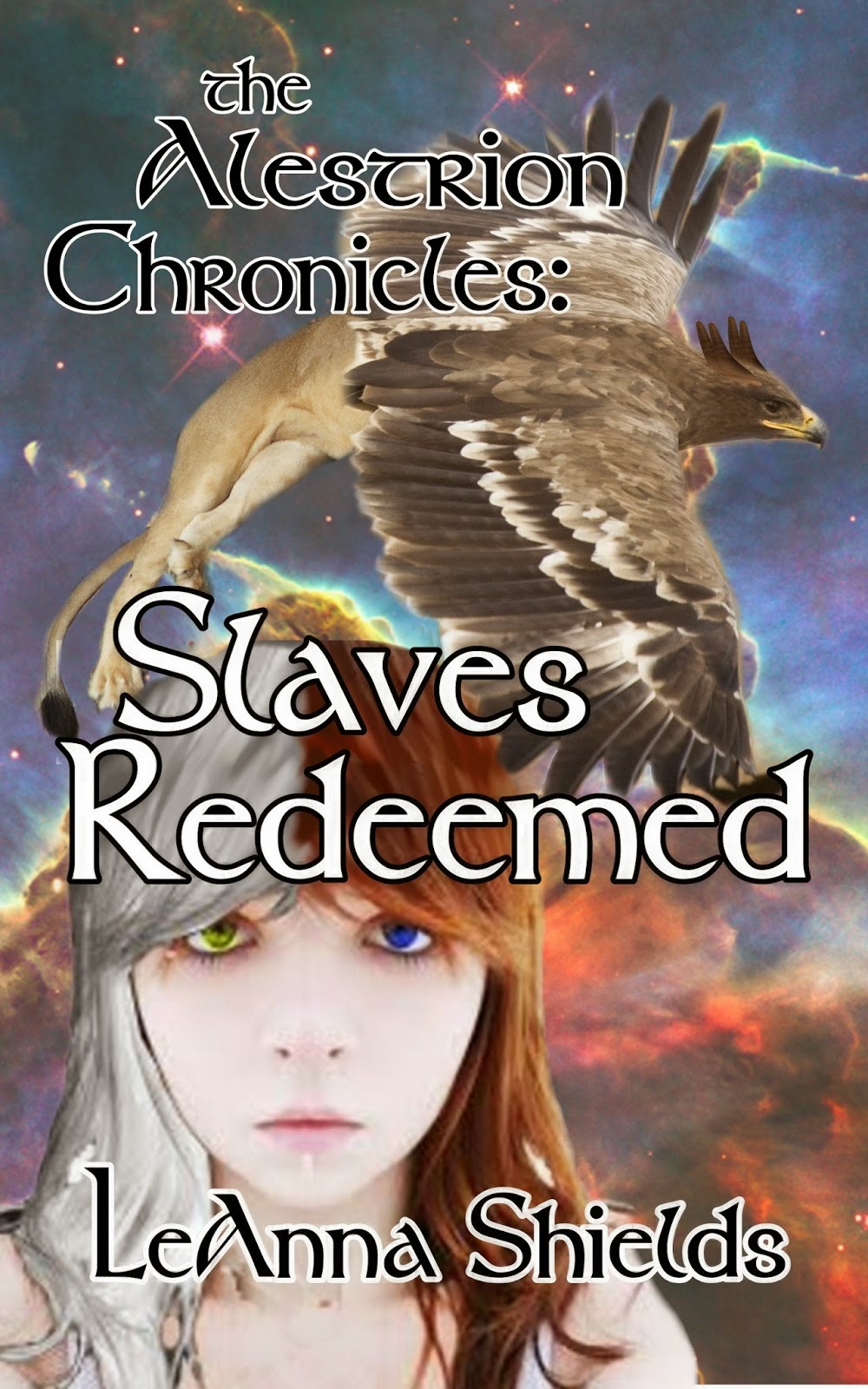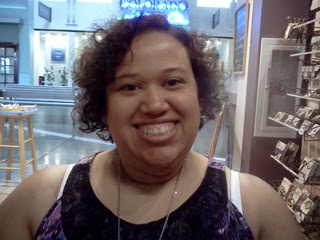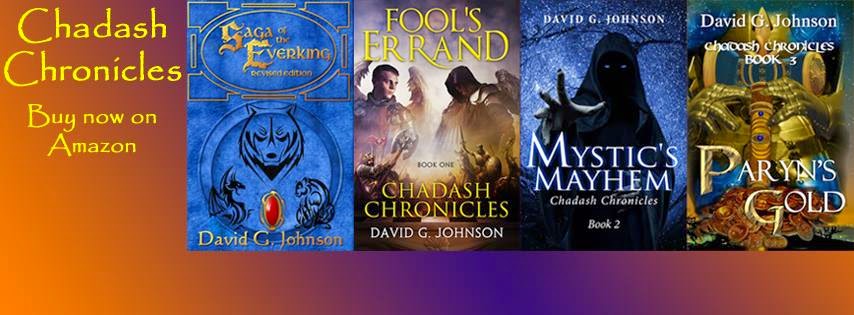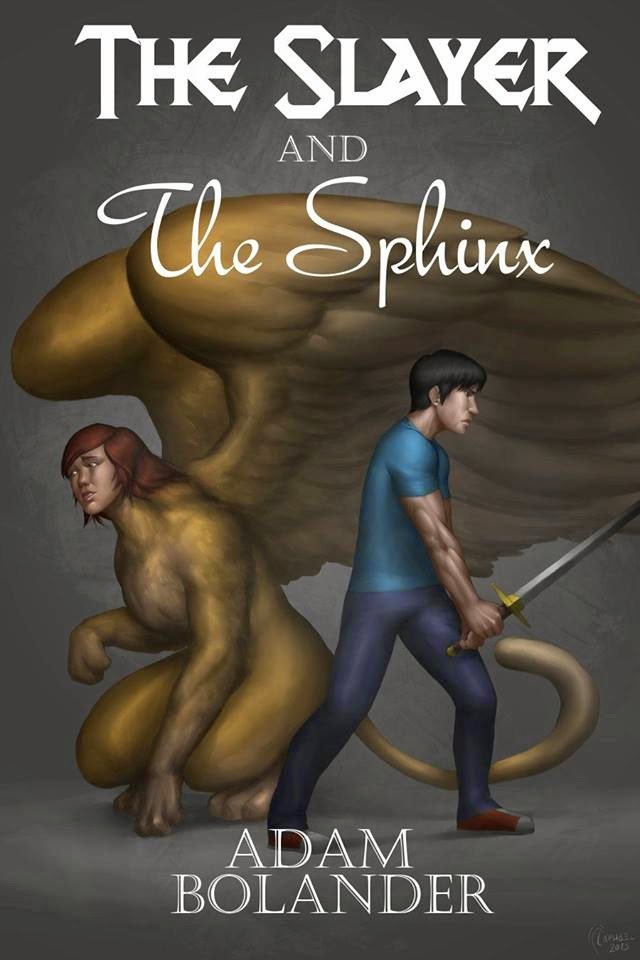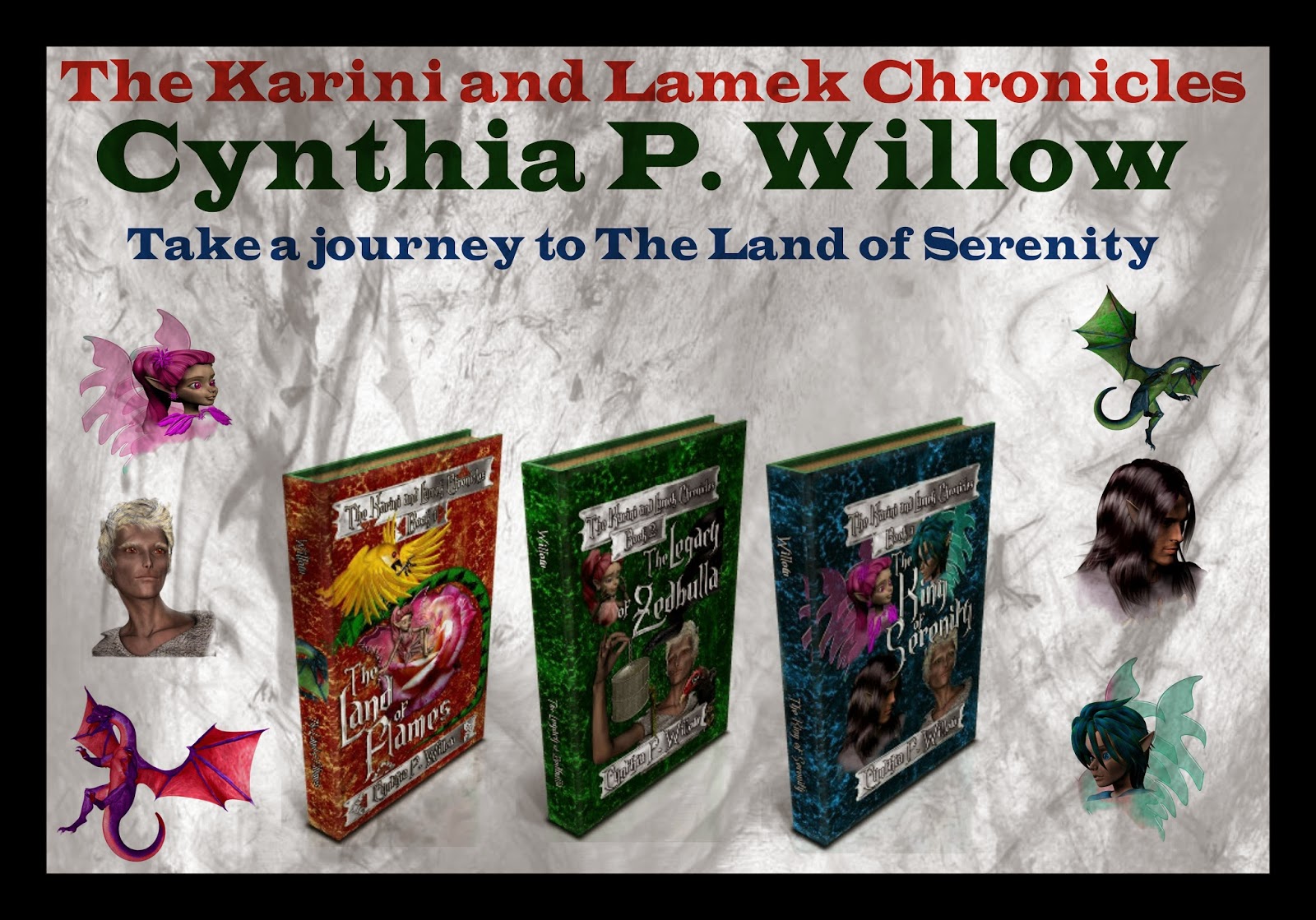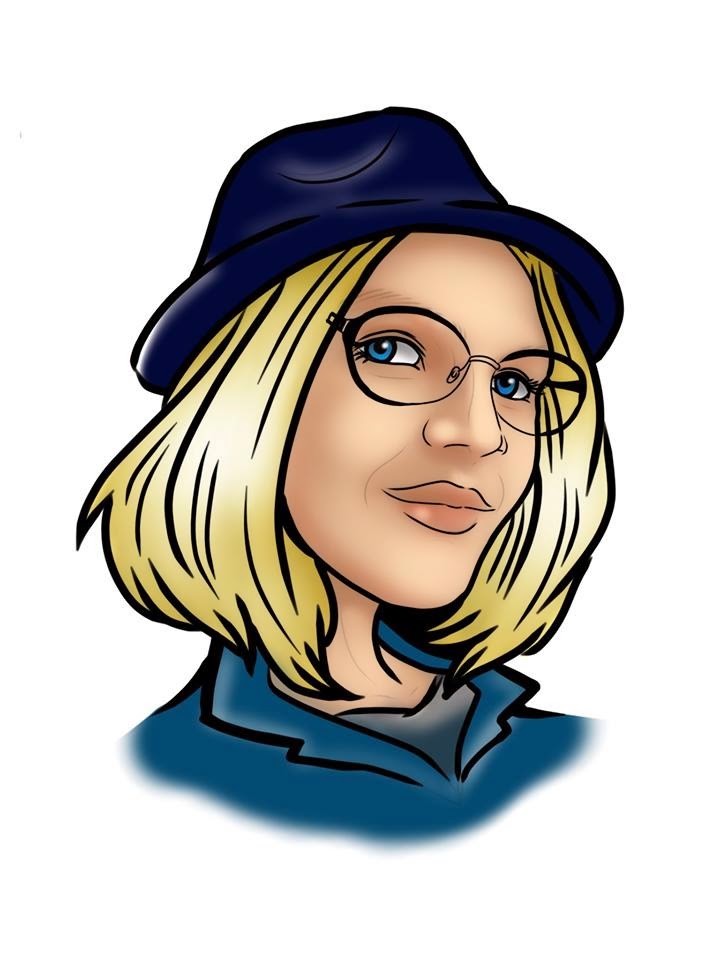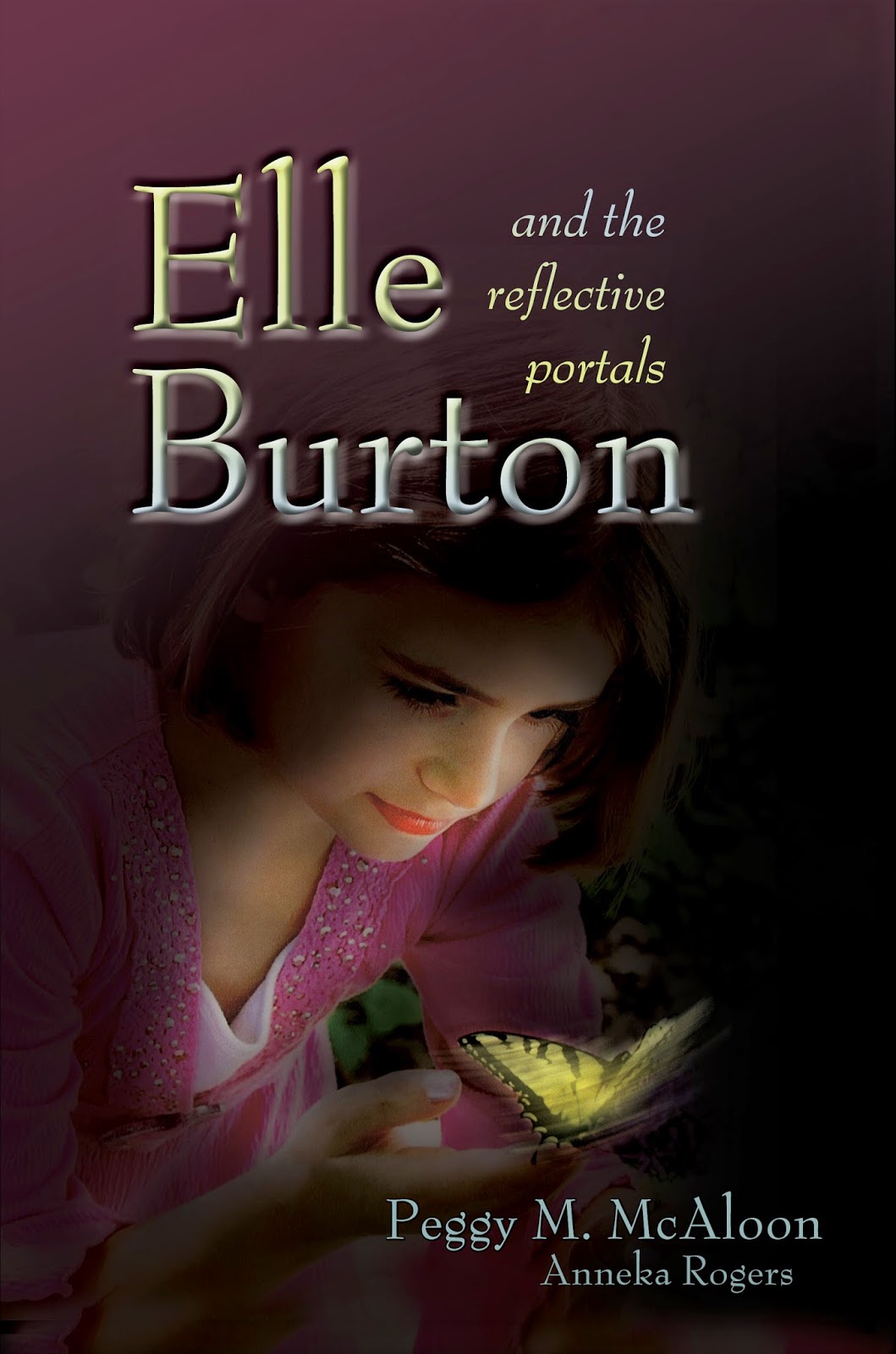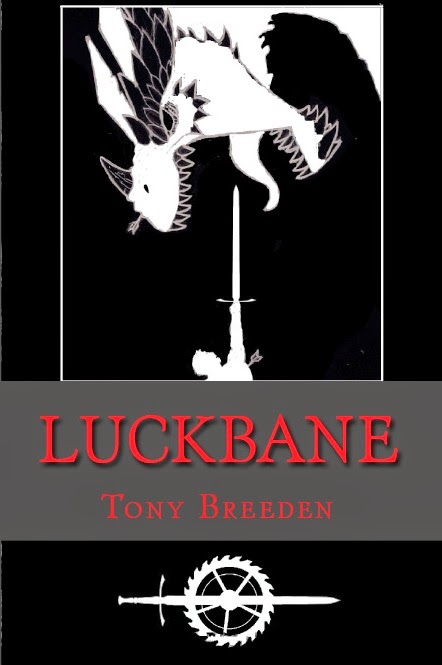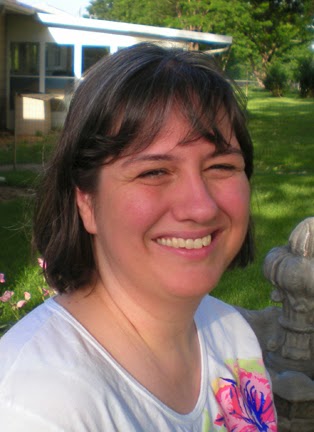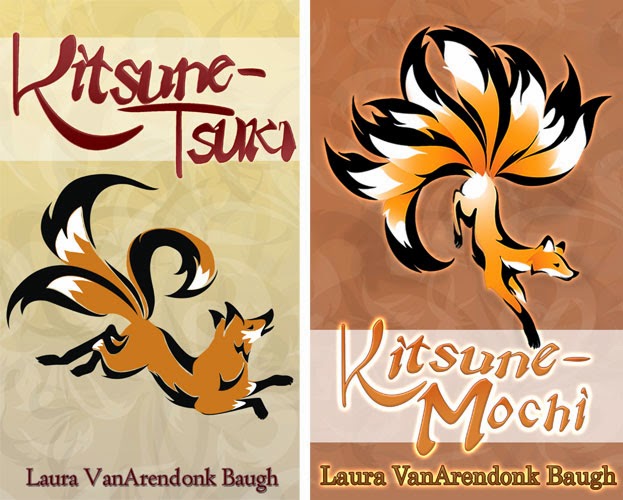Welcome to Realm Explorers! In this weekly series, we visit a variety of unique worlds created by talented science fiction and fantasy authors. Enjoy your travels! And don’t forget to read to the bottom of the post to find out more about each author and see how to purchase the featured book.
LeAnna Shields
Title of book and/or series:
The Alestrion Chronicles
Brief summary of the story:
Aira’s life of slavery turns into a life of freedom and fame when she is rescued and returned home. After a year as an apprentice to a griffin keeper she quickly becomes Tanul’s most famous griffin racer, but that’s not the life she was meant for. In a twist of fate she becomes the only one who can save the life of the king from an assassination attempt only to discover that she is in fact his long lost daughter and heir to the throne.
Brief description of the world or location you created for this story:
Tanul is an earth-like planet and the only populated planet in the system of the same name. The surface is mostly covered in water except for a several island nations. Most of the story takes place on the planet’s central island Kabber-ka between the capital city and a small village called Delthen.
If we were to visit Tanulas tourists, what would you recommend that we see or do there?
If you were to visit the Planet Tanul the first thing you would see is the capital city. Built entirely of constantly growing crystal, the city is an ever changing rainbow depending on the stone’s color and the time of day. The crown of the city and center of power is the Palace complex. For entertainment I recommend a day at the griffin race.
What dangers should we avoid in Tanul?
Overall, Tanul is a very peaceful and safe place to be. The only danger that should be avoided is a pesky egg-stealing black griffin. Motive for his thievery is unknown as of yet. Also, there is a shadowy figure that’s rumored about, named Techneon.
Is there a distinct or unusual type of food or meal that we might be served in Tanul?
The fruit vendors that line the streets are always willing to give a sample of their wares. Especially of their Zeeda melon, a pink fleshed melon that has a flavor some would compare to a strawberry.
What types of weaponry or fighting styles are common in Tanul?
The popular fighting style is the use of the Ilon Char: a set of steel fans used for self defense.
What types of vehicles, animals, technology, etc. are used to travel in or to Tanul?
The main modes of transportation while on world are the hover car and tramways. But the most popular and exhilarating way to get around is on the back of a griffin.
What types of plants, animals, or sentient races might we encounter in Tanul that we don’t see on Earth?
The sentient races you will encounter on Tanul vary. The central continent is inhabited by the Tanulians, a race of humanoids. They stand at 6 ft. tall, have white hair, and have an average lifespan of 200 yrs. They share the island with another race called the Eltheen, their mixed-race children called the Ta’ran Muth, and a race known as the Greyon who inhabit the mountains. The Outer Islands are inhabited by other more secretive races: there are the Tykerians, a race of half snake half humans, the Unari, and the Marshlender. Also there are the griffins, majestic telepathically sentient creatures that have the head of an eagle and the body of a lion.
Is there any advanced or unusual technology in Tanul? If you haven’t described it already, please give some examples.
Holographic communications and space ships are some of the advanced technology.
Tell us about any sports, games, or activities that are available for entertainment in Tanul.
For entertainment there are the griffin races. Young Tanulians come together and race with their griffin partners through canyons. The Commander’s Cup race is the highest event of the season and the winner become head of the griffin racer’s guild, called The High Wing Commander.
Are the days of the week and months of the year the same in Tanul as on Earth? What holidays or special events are celebrated regularly there?
The days of the week are similar, if slightly shorter than Earth’s. The Spring Festival and the migration of the lunar butterfly (a beautiful six winged bio-luminescent insect) are highly celebrated events. There’s also the newly instated Victory Festival.
Is there a particular religion practiced in Tanul? Please describe what it involves.
Under Princess Aria, the following of Alestrion, the great phoenix, has been revived, along with the prophecies concerning him and an interest in the tomes of the law.
What is the political or government structure in Tanul? Who is in charge there at the moment, and what kind of leader is he/she?
The political structure on Tanul is a matriarchy/democracy. Right now the High Queen Nalan and her family are in charge: her husband High King Arameus, her son King Alistare, his wife Queen Icallia, and daughter Princess Aria. Under their reign and leadership the planet has become quite prosperous, and the people are very excited to see what the future brings with newly crowned princess Aria’s rule.
Are there any other unique cultural practices that we should be aware of if we visit Tanul?
Two cultural practices that are readily observable are the Nish Alen, and an ear wrap worn by locals. This is given to a child when he or she has undergone a maturing process called the chrysalis. They also place small crystals beside their eyes to mark their place in society. Merchants, herbalists, racers and warriors each have a different color and arrangement. These are presented to an apprentice upon graduation.
Has anything in your actual life inspired the locations, cultures, etc. in your book?
My love of mythology inspired a few of the cultures, such as the Tykerians; they’re based loosely on the mythical creatures called the Naga.
What, if any, “hot-button” or controversial topics do you touch on in your book?
Slavery and abuse are very lightly touched on in the fact that Aria is rescued from slavery and life with an abusive grandfather to become a future ruler.
Author Autobiography:
LeAnna Shields was born in Texas but raised in Colorado. She learned at a young age that she had a vivid imagination and a talent for creating adventures. She currently lives in the Denver area where she writes and tends to her garden.
Where, and in what formats, can we purchase your book(s)?
My books can be found on www.Amazon.com in paperback and for Kindle.
They can also be found on www.Barnesandnoble.com
Where can readers connect with you online?
Readers can find me on Twitter @inkweilder
Welcome to Realm Explorers! In this weekly series, we visit a variety of unique worlds created by talented science fiction and fantasy authors. Enjoy your travels! And don’t forget to read to the bottom of the post to find out more about each author and see how to purchase the featured book.
Author’s name:Ashley Hodges Bazer
Title of book and/or series: Heralds of the Crown: Poison
Brief summary of the story:
As part of a sect called the Strages, Marcella is ordered to execute fierce assaults on the Logia—gifted believers in the triune deity known as the Crown. After receiving a vision, she begins to question her allegiance and finds herself seeking counsel from a leader in the Logia faith, whom she was sent to annihilate.
When her mentor, Thaed, uncovers her betrayal, he orders her to do the unthinkable—kill the Logia leader who has become her friend. Her choice will result in either the destruction of the Logia or her own death.
The series of Strages attacks call the Logia to prepare for a major battle. In doing so, Gaultier Lassiter is enlisted. When he discovers an unconscious young woman buried in a snowdrift, his world is turned upside down. She has no memory and no ability to speak—only a strange symbol carved into her chest.
The question of her identity leads to a journey of legendary proportions. Between his own personal struggles with his estranged brother, his unmet potential, and the murder of a close friend, Gaultier fights to cling to his faith. And once the mystery is solved, will Gaultier be prepared to face the truth?
Brief description of the world or location you created for this story:
The Circeae System is home to many beings, just like us. There’s nothing spectacular or outlandish about them, but they do have space flight technology that allows them to travel the system with relative ease.
Three stars—Vetus, Aevum, and Novus—and seven inhabitable moons surround the heart of the system, the bustling planet Crenet. Each star has its own rotation of planets.
The religious beliefs of the system are widespread, but the focus of the saga is the Logia. They are believers in truth, justice, honor, and good. Their counterparts are the Strages, but little is known of them aside from the fact that they are pure evil. They are apathetic toward humans, and act cruelly and thoughtlessly.
The Logia lead the system in peace and prosperity, culminating in the reign of the Ruler Prince, Ternion. Unrest, however, leads to his deposition, allowing the Progressive Legacy—a powerful and cruel government—to take over the system. This cosmic war also results in a religious holocaust.
If we were to visit the Circeae System as tourists, what would you recommend that we see or do there?
On Ossia, you would see the Sunlight Gardens. They are indeed a sight to see. Tersus, the neighboring moon, is where much of the Progressive Legacy’s Elite live. Reveille has an exceptional Zephyr academy, where many Legacy officers have studied. Archet is the primary weapons maker for system. And finally, the shipyards on either side of the system—Atrum or Tzigane—are impressive as well.
What dangers should we avoid in the Circeae System?
The star Vetus is dying. For reasons unknown, its energy is dwindling, leaving most of the surrounding planets uninhabitable. Dark things seem to come from that rotation, given that it is home to the leaders of the Progressive Legacy, the Tribunal.
Is there a distinct or unusual type of food or meal that we might be served in the Circeae System?
Under the rule of the Progressive Legacy, you’d be hard-pressed to find anything but rationed protein paste. But if you know the right people, you can get your hands on a sunberry or a pulpmelon.
What types of weaponry or fighting styles are common in the Circeae System?
Those who have their minds on the past tend to use swords and daggers. However, as the Legacy grows in strength and number, many more have learned to use a pincer (Plasma Induced by Negatively Charged Elemental Reaction)—a plasma gun. There’s also something that resembles a cattle prod called a stinger, as well as an APL (Activated Projectile Launch ) rifle, which can shoot several different devices, including tracers, immobilizers, and detonators.
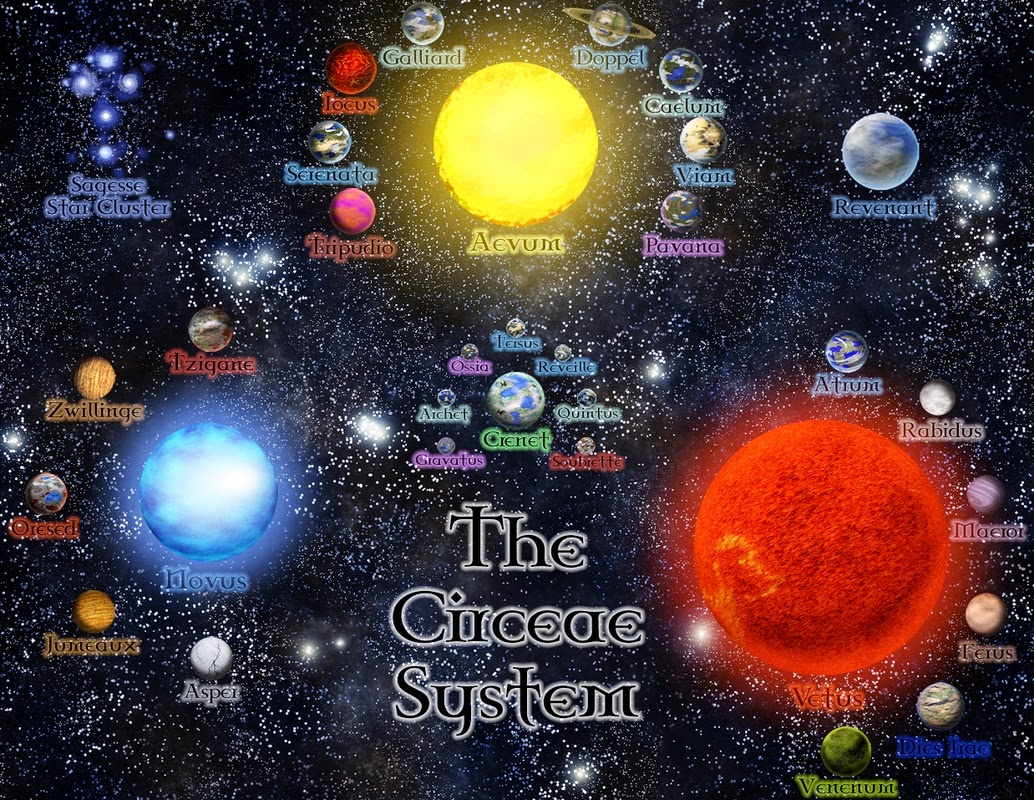 What types of vehicles, technology, etc. are used to travel in or to the Circeae System?
What types of vehicles, technology, etc. are used to travel in or to the Circeae System? The primary modes of travel between planets and moons are space crafts and shuttles of varying sizes and speeds. Ground transport includes utility vehicles and cruisers.
What types of plants, animals, or sentient races might we encounter in the Circeae System that we don’t see on earth?
On Oresed, legend speaks of a gentle animal called a braeshore that could be ridden. One of the more exciting plants is the subluce tree. When looked at with the right state of mind and heart, the leaves shimmer and glow.
What role, if any, does magic or the supernatural play in the lives of people in the Circeae System? If there is magic, please give some examples of what it involves or how it’s used.
There are some who believe in magic, to be sure. However, followers of the Crown know the true source of power comes from the Creator King. Through Him, human beings have the power to physically heal (restoration), mentally or emotionally heal (reconciliation), and use other gifts such as wisdom, strength, leadership, and communication. Of course, there are those who abuse such gifts and learn much darker ways to do “magic.”
Is there any advanced or unusual technology in the Circeae System? If you haven’t described it already, please give some examples.
The technology, much like in Star Wars, is assumed rather than explained. The people of the Circeae System are able to travel through space comfortably and relatively quickly, but I don’t go into details as to the “how”.
Tell us about any sports, games, or activities that are available for entertainment in the Circeae System.
A favorite pastime is tossball. Sadly, in the Legacy years, books are forbidden, however a small contingent of folks enjoy reading and re-telling the legends of Kincade the Space Sailor.
Are the days of the week and months of the year the same in the Circeae System as on earth? What holidays or special events are celebrated regularly there?
Yes, the Circeae System uses the same time measurements we are familiar with on Earth, however, longer time periods are measured in a different way. The major epochs that span the saga are identified as Coronam Tempus (Crown’s Time—prior to the arrival of the Ruler Prince), Prince’s Reign (the reign of Prince Ternion, the Ruler Prince), and PLR (Progressive Legacy Rule).
Is there a particular religion practiced in the Circeae System? Please describe what it involves.
Two distinct religions stand out and are in a constant struggle. On one side are the Logia. These are benevolent, kind followers of the Crown, the triune god of the Circeae System. They also have supernatural gifts, unlike their counterparts, the Lumen. They, too, follow the Crown and support the Logia. Enemies of the Crown are known as the Strages and the Crepusculum. Like the Logia, the Strages have supernatural abilities, but theirs come from much darker sources. They seek to end the Logia and the glory of the Crown.
What is the political or government structure in the Circeae System? Who is in charge there at the moment, and what kind of leader is he/she?
At the start of the series, the Logia have a good hold on the system. They anticipate the coming of the Ruler Prince, who will lead the system in peace and prosperity. Great unrest shakes the throne, however, allowing a more sinister force to take control and depose the Ruler Prince. A trio of beings—who can only be described as inhuman—lead the rise of the Progressive Legacy, a military-based government with an iron fist.
Are there any other unique cultural practices that we should be aware of if we visit the Circeae System?
Several lesser-known breakout religions embrace a few crazy rituals. The Ghosts, a band of freedom fighters, have been known to use such actions to prevent arrest.
Has anything in your actual life inspired the locations, cultures, etc. in your book?
Definitely the culture. I am a Christ follower, and I wanted to explore that in a science-fiction setting. I also tend to use names of people or places around me, but slightly distorted. For instance, the first characters I created in this series were Selah and Gray (Valor).Selah is an anagram of my name minus the y, while Gray is an anagram of my husband’s name.
What, if any, “hot-button” or controversial topics do you touch on in your book?
I touch on a lot of Christian themes, but I avoid getting preachy. You will not find a sermon on forgiveness, but you’ll find a character struggling with that. You won’t get hammered with a message of redemption, but you’ll see the idea woven into the epic storyline.
Author Autobiography:
Ashley Hodges Bazer is the author of Heralds of the Crown: Poison and its following books, Fusion and Reconciliation. She’s often decked out in bellbottoms and grooving out on the lighted dance floor. Okay, not really, but she does have a thing for the BeeGees. She lives in Colorado with her husband and three children. After earning her bachelor’s degree in theatrical stage management from Arizona State University, she went on to work for Disneyland in that capacity. A love affair with books led her to work for several different bookstores. Currently a producer for an international daily radio program, she’s learning to balance working, writing, and momming duties. Her debut novel, Asylum, was traditionally published by WestBow Press in 2012. When she’s not writing, she’s crocheting or belting out Broadway show tunes. And she’s a real duchess!
Where, and in what formats, can we purchase your book(s)?
Where can readers connect with you online?
I hope you all enjoyed the trip to the Circeae System. Questions about the world or the book? Ask them in the comments and the author will get back to you!
Click here to read other posts in the Realm Explorers series.
Please join us again next Monday for a trip to the fantasy world of Tanul in Realm Explorers Part XV!
Welcome to Realm Explorers! In this weekly series, we visit a variety of unique worlds created by talented science fiction and fantasy authors. Enjoy your travels! And don’t forget to read to the bottom of the post to find out more about each author and see how to purchase the featured book.
Author’s name: David G. Johnson
Title of book and/or series: Chadash Chronicles: Book 1-Fool’s Errand, Book 2-Mystic’s Mayhem, Book 3 (out late 2014)-Paryn’s Gold, and the prequel short story Saga of the Everking
Brief summary of the story:
On the far side of the universe God has created a new world, the world of Chadash, where two groups of angels battle for the souls of men. Chadash is a world filled with magnificent beings, ancient races, epic heroes, and evil forces seeking to conquer or destroy. An unlikely band of heroes, a teenage thief, a holy warrior, a barbarian prince, a priest, a half-feline huntress, and an outcast necromancer, are drawn together for what was to be a simple job, but soon transforms into a much greater adventure. Come along to the world of Chadash, where heroes strive and battle as unwitting pawns in an even greater struggle.
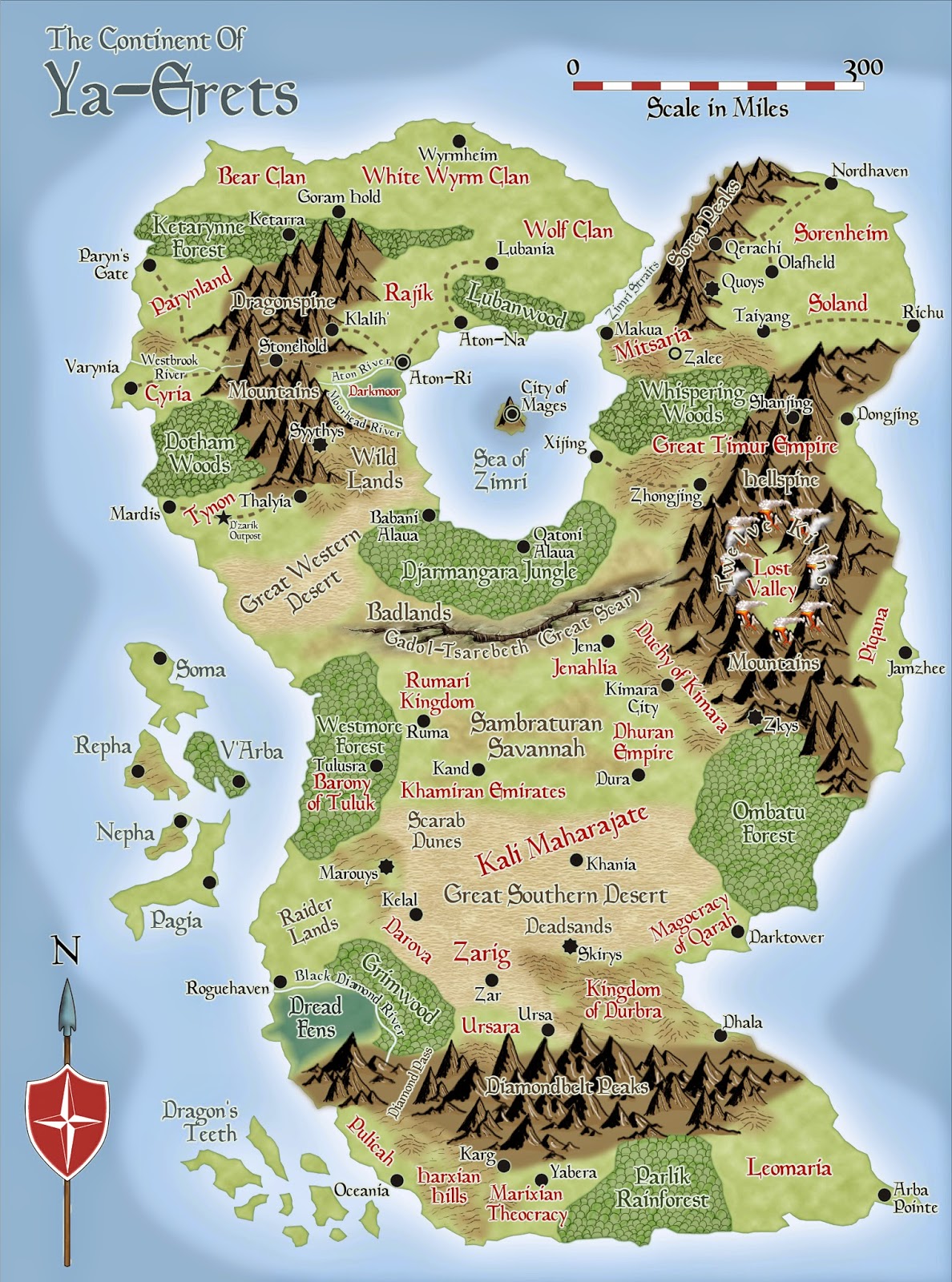 Brief description of the world or location you created for this story:
Brief description of the world or location you created for this story: Chadash is a roughly earth-like planet, but is filled with many sentient races.
It is a vast land of dangerous creatures, hostile enemies, and exotic landscapes which will capture the imagination of readers and give them a wondrous new world to explore along with the heroes.
If we were to visit Chadash as tourists, what would you recommend that we see or do there? Well, Chadash is a vast and varied land, so that question would be a bit like asking what a visit to North America would be like.
Canada is very different from Mexico.
Maine is vastly different from California.
So for the rest of the discussion, let’s focus on the northwest region of the continent of Ya-Erets, where most of the action from the first three books takes place. It is a more civilized and relatively homogenous area of Chadash.
The first of the many must-see highlights for northwest Ya-Erets would be the independent city-state of Aton-Ri. It is truly a melting pot, where races serving the angels serving the One Lord, the Malakim, mix and mingle with the races serving the rebellious and evil angels, the Ayabim. The only rules for residence in Aton-Ri is a willingness to live in peace, and an agreement to fight in defense of the city if needed. No matter how different one is, they can find a home in Aton-Ri.
A second don’t-miss place would be the amazing stone spires of the Durgak city of Stonehold. The Durgak are master miners and stone carvers as well as the most accomplished armorers on Chadash. Visiting the epic and vast halls carved from the very Dragonspine Mountains themselves is a sight to awe the most stoic visitor.
A third place would be the paragon of civilization in the northwest, the crown jewel of Parynland, the city of Paryn’s Gate. Epic architecture with nature themes run through the city, as though the Ketarynne Forest to the north had extended its essence into Paryn’s Gate to infuse the city. Spotting Ketarynne’s main inhabitants, the reclusive and elegant V’rassi, is easy to do in Paryn’s Gate, as most of the Parynlanders have at least a trace of V’rassi blood in their family lines.
Finally, one of the most exotic cities to visit is the tent city of Klalih’, the capital of the nation of Rajik. The city has very few permanent structures, but is built by the nomadic Rajiki horsemen as a vast sea of colored tents. Vendors from all the tribes gather in the winding and ever-shifting market streets of the nomadic city, and sights, sounds, smells and tastes to delight any visitor can be found here.
What dangers should we avoid in northwest Ya-Erets?
One of the heroes, Melizar, who has traveled much further than any of the others, refers to the northwest as “a cradle of civility and peace, compared to the rest of the world.” Still, it is not without its dangers. There are the “death grass” adders that inhabit the plains of the northwest, and their bite can kill a full-sized horse with a single bite. The Wild Lands to the south of Darkmoor are filled with Goblinoid tribes and it is an area best avoided if at all possible. Finally, if enjoying the hospitality of the cosmopolitan city of Aton-Ri, the southwest part of the city, especially around the neighborhood known as The Barrows, is best to avoid after dark. Although, if one is an adventurer seeking information, The Iron Cur Tavern, or “Mok’s Place” as the locals call it, sits on the edge of The Barrows and is the place to go in Aton-Ri.
Is there a distinct or unusual type of food or meal that we might be served in northwest Ya-Erets?
Ah, yes! There is one delicacy that is craved by adventurers and travelers with purses heavy enough to afford it. yochamabread is a specialty made by the Moors of Darkmoor. Being a swamp, food spoils very quickly in Darkmoor and bread cannot be kept for more than a day without going moldy. So the Moors have developed a baking technique using resin from the Yocha tree which grows everywhere in Darkmoor. They oven-seal the bread by baking it in the resin, and as long as the hard, resin shell remains intact, the bread will be just like it was fresh-baked for up to two or three weeks! Eating well on the road is difficult, but for those who can afford it, yochamabread can make the difference between eating and dining on the road.
What types of weaponry or fighting styles are common in northwest Ya-Erets?
Well, in earth terms it is a society just on the brink of the gunpowder age. There is one nation of inventors in eastern Ya-Erets, the Duchy of Kimara, whose technological advancements are starting to make their way into other nations. Powder weapons are not uncommon, but they do show up very occasionally in the hands of travelers. Much more common are typical swords, maces, clubs, spears, bows and arrows, crossbows, etc. There are some advanced fighting styles, as various schools of martial monks are known in a few societies. The monks can be very dangerous fighters, but they are not undefeatable and often have their own weaknesses or idiosyncrasies which can be exploited. This, added to the fact that the monks are very few in number compared to the overall population of Ya-Erets, helps keep them from becoming too overwhelming a force. Additionally the often competing philosophies of the different schools mean that opposing monk schools often also serve to keep each other in check.
What types of vehicles, animals, technology, etc. are used to travel in or to northwest Ya-Erets?
Again, barring Kimara, which is said to have invented steam powered vehicles, horses and wagons are the normal mode of travel. Some races are very fleet of foot and prefer to run rather than ride. This is seen in the story in the person of Arreya, a half-Zafirr (feline humanoids) huntress and one of the heroes of the first three books. Other races, which aren’t encountered in the first three stories, have wings and can fly. This includes the Ouati, bird-like humanoids, the Zza-zree, bee-like insectoids, and some of the Great Wyrms, like dragons of old. But of course Wyrms have been extinct since CY666, everybody knows that, right? But there are rumors…
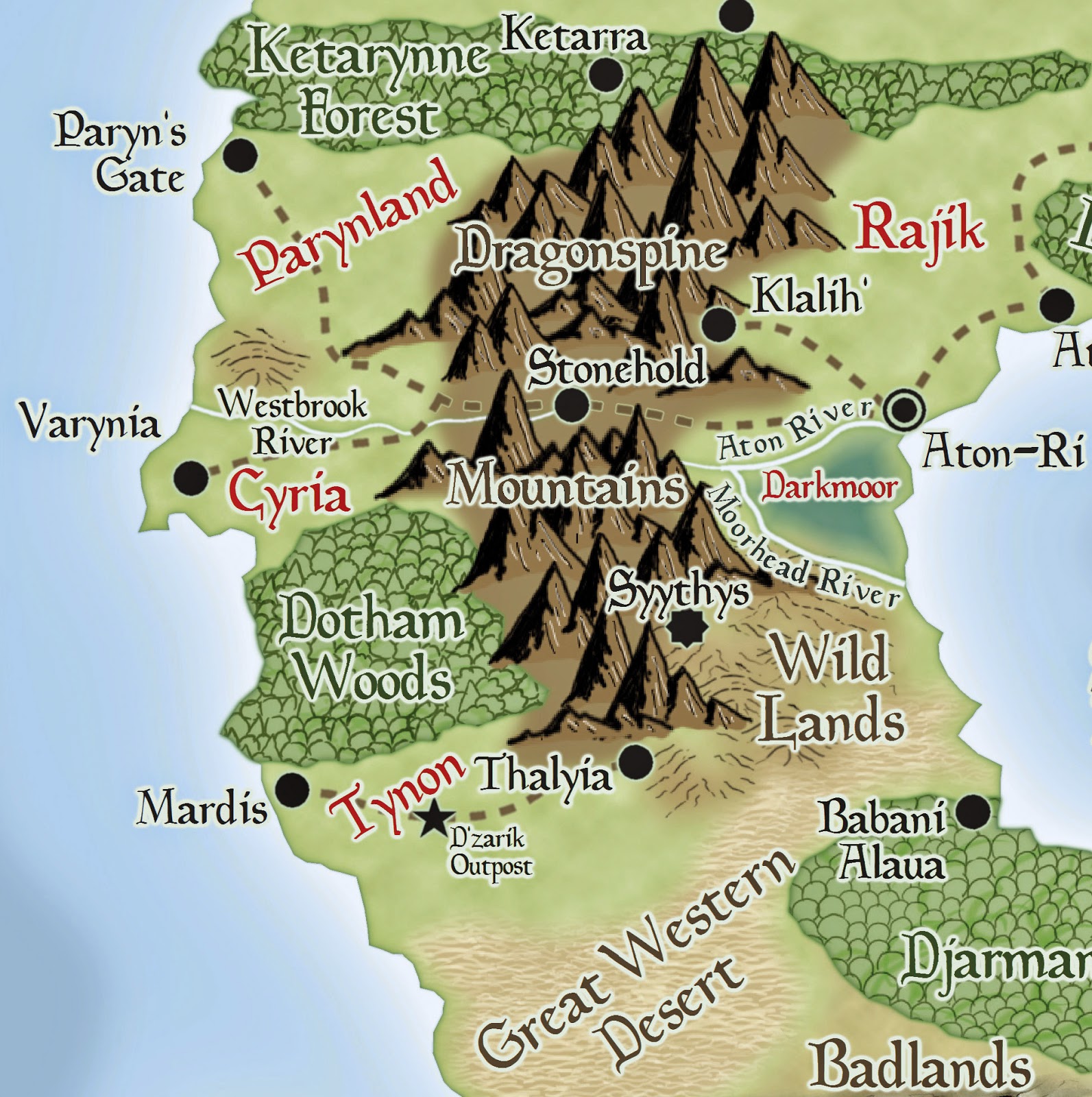
What types of plants, animals, or sentient races might we encounter in northwest Ya-Erets that we don’t see on earth?
Chadash is filled with other races, because of the manner and purpose for which it was created. There are so many, but other than the ones I have already mentioned in other answers, and only limiting to the races common to northwest Ya-Erets, there are still quite a few. Goblinoids include races like Orcs, Hobgoblins, and Ogres, and are quite common in the Wild Lands and the Dragonspine Mountains. Giants, called Nephilim, also are found fairly commonly in the Dragonspines. The more dangerous forest of Dotham Woods is home to reptiloids and their ilk, as well as many insectoid races. I have already mentioned the Durgak (think fantasy dwarves) of Stonehold City and the V’rassi (think fantasy elves) of Ketarynne Forest, but there are also the human race of Adami, which are very similar to the humans of earth. The Qarahni, another human race, are large, hearty barbarians who inhabit the Clan Lands of the north. Goldain, one of the main heroes in the story, is a prince of the Wolf Clan Qarahni. Mitsar, or halflings, are also often seen in and about Aton-Ri, although their main homeland is actually in northeast Ya-Erets. Wolf-like humanoids called Fenriri, and their half-human offspring the Fenratu, are very common in the northwest, especially given a large population of them reside in eastern Ketarynne and Lubanwood. That covers most of the races that appear in the first three books, but as Melizar rightly said, there is a vast and wondrous world out there, and other parts of Ya-Erets, which the heroes will visit in future stories, contain many more wondrous races.
What role, if any, does magic or the supernatural play in the lives of people in northwest Ya-Erets? If there is magic, please give some examples of what it involves or how it’s used.
The “magic” in all of Chadash is no different than on earth. What? Yes, there is “magic” on earth. We see it throughout the Scriptures. Like in the Bible, there are three kinds of supernatural powers that manifest on Chadash.
“Oth” powers are like the miracles of the Bible. They are given only by God, called the One Lord on Chadash, and are at His discretion. They can be one-time occurrences in answer to a specific prayer for help, or can be gifted longer term.
“Kashaph” are the second type, and this is like the dark powers of sorcery condemned in the Bible. Such things come from the fallen angels, the Ayabim, and include the dark powers of necromancy, conjuration, and even divination. There is often conflict within the heroes when Melizar, a necromancer, uses his kashaph powers around the characters who are followers of the One Lord. It is truly a test of patience, but also a good lesson in how we can deal with people in the real world who think, act, and behave in ways very different to us. We can choose to condemn or to teach. Too often in the real world, Christians choose the former, but fortunately, the wise and patient leader of the heroes, the holy warrior Gideon, chooses the latter.
“Koach” are the final type of powers, and they are the most mysterious of all. The are not studied like the kashaph powers, or specifically asked for like the oth gifts, but are granted totally at the discretion of the One Lord for His purposes. Some races seems to have certain koach powers, like the Solana’s control of light, or the Piqa manifestation of electricity. Others, like bard song koach or some of the human monks’ ability to manifest elemental powers, are not tied to racial attributes. Then there are the Qatoni, Mitsar with koach gifts, many of whom are nature priests called druids. They believe in the One Lord as the creator of nature, but do not have the formalized religion of the typical One Lord priests.
Is there any advanced or unusual technology in northwest Ya-Erets? If you haven’t described it already, please give some examples.
Not really. Thatcher, one of the heroes, has a knack for inventing and loves coming up with various gadgets and gizmos. Most of what could be called “technology”, however, would be found in Kimara. There may be a visit to Kimara in later books, but it is not part of the northwest and not really featured in the first three books.
Are the days of the week and months of the year the same on Chadash as on earth? What holidays or special events are celebrated regularly there?
It is very close. There is still a seven day week, but each month on Chadash is 28 days long, so exactly four weeks. There are thirteen months in the year, thus making Chadash’s year one day shorter than ours, i.e. 364 days. There is no leap year on Chadash. The one holiday which plays prominently in the stories is Rest Day, which is the seventh day of every week. It is observed very closely to the way the Sabbath would have been observed in Scripture, but not universally. Most races and nations have wandered far from the teachings of the One Lord, but the V’rassi follow closely the tenets of the Old Testament observances, living quite closely a picture of what Messianic believers would live in today’s world on earth. The Parynlanders, mostly at least partially descended from the V’rassi, tend to hold closer to the observances as well, and Paryn’s Gate is the one city in northwest Ya-Erets that still keeps the tradition of Rest Day.
Is there a particular religion practiced in northwest Ya-Erets? Please describe what it involves.
There are both many, and none. Some societies follow very closely the worship of the One Lord. This is especially true of the servant races of the Malakim, or the angels who serve the One Lord. These servant races are not completely free-willed, but their half-human offspring, should they breed with one of the human races (i.e. Qarahni, Adami, Mitsar, Raphaim, Arba-Zeroa) are. The humans, and half-bloods, being free-willed, often choose their own path. Some do worship the One Lord, while others have chosen to worship the fallen angels, the Ayabim, or some other false gods of Ayabim invention. Many have a general awareness of spirituality on some level, but have no true belief or worship. In many ways, Chadash isn’t that different from earth, is it?
What is the political or government structure in northwest Ya-Erets? Who is in charge there at the moment, and what kind of leader is he/she?
Being a bastion of civilization on the continent, the northwest is a collection of cooperating nations who rule individually in their own area, but who govern the region collectively through the efforts of the Northwest Diplomatic Council, or NDC. The NDC member nations are the independent city-state of Aton-Ri, Rajik, Darkmoor, Parynland, and Cyria. These are human-led nations for the most part. Stonehold hosts the NDC and if necessary the Durgak agree to serve as mediators for disputes, given their neutrality to the external politics of the other nations. It seems to work well for the most part, and the NDC has managed to be the chosen way to settle international disputes for nearly three decades. The NDC was formed after the end of the Parynland-Cyria war.
Has anything in your actual life inspired the locations, cultures, etc. in your book?
Yes, actually. I live internationally now, and have been a minister and visitor to many nations in North America, Europe, Africa and Asia during my lifetime. I love the vastly different cultures, customs, foods, etc I have encountered in my travels, so in my books I felt it was important to create a deep and realistic world where readers could travel with the heroes and get to experience some of the wonders of different places and different people. Also I have a master’s degree in Biblical Languages, so I really enjoyed incorporating Hebrew into the V’rassi culture as their racial language. It gives an ancient feel to Chadash, and a three-dimensional aspect to some of the terms that have crept into other languages and cultures throughout Ya-Erets. That love of history, and fascination with how current events have developed from historical ones, is a key factor in my worldbuilding, so when readers get my books, they get a world that feels real despite the wildly fantastical elements I incorporate. Readers of epic fantasy should get an epic world. If I fail to do that, I feel I have short-changed my readers.
What, if any, “hot-button” or controversial topics do you touch on in your book?
Well, the faith element in my book is present, but not smothering. It occurs naturally within the story and characters. Some will dislike the book because it is written from a Christian worldview, regardless of how skillfully or subtly the faith elements are presented. Other unbelievers have said in reviews, they appreciated that I was up front in the Foreword that it was written from a Christian worldview, but that engaging with the faith elements was not necessary in order to enjoy the story.
I also have gotten a little flak for presenting the idea of repentant angels. I understand human tradition doesn’t like that idea, but I, and a group of biblical scholars who I engaged to beta read for me, went through Scripture and could not discover anywhere that the idea is specifically excluded. We know there are some angels, specifically named at the judgment, who will not repent. I respected the biblical account there by leaving all those named angels still on earth with Lucifer to play out the Bible’s timeline as written. But there are many, many more angels than are specifically named in Scripture, and there is no Scripture which specifically says that there could not be some repentant angels. Speculative fiction is all about asking the “what if” question, so that is what I did as part of the backstory and setup for the world of Chadash. I know some believers won’t like that, but honestly, I open the door, if someone can prove to me from Scripture that anything I have written is outside the “gray area” or is specifically precluded by what the Bible says, I will pull my books from the shelves right away. I have no desire to countermand God’s word, but I also have chosen to write within the boundaries of freedom of the letter of God’s word and not to be deterred by the tradition of men.

Author autobiography:
I worked for many years as a senior manager for various Information Technology companies. Late in life, I came to faith in Christ, and that turned my life in a whole new direction. I knew from day one that I intended to serve him, but had no idea what that meant. The wonderful pastor who led me to Christ encouraged me to enroll in Seminary, so I came to Christ in August and was in Seminary by the following May. Years later I have completed my MDiv in Biblical Languages with a concentration in International Church Planting, and we currently live in Asia serving as living witnesses to our faith. Writing is another love I have had for my whole life, especially of Fantasy and Science-Fiction, and God has given me a way to expand my ministry with the gift of writing.
Where, and in what formats, can we purchase your books? The books can be found on Amazon. For those wishing to save 99 cents, you can actually get a free copy of the short-story teaser/intro to Chadash, Saga of the Everking, from Smashwords or B&N.com for the Nook.
If you are a kindle reader, you can get the mobi file from Smashwords or just get it for 99 cents on Amazon directly.
Saga of the Everking (free edition on Smashwords)
I would truly love to connect with any readers who might have questions, comments, or encouragement for the Chadash Chronicles series.
I have a special email I have set up for correspondence related specifically to my writing or the Chadash Chronicles series as well.
That email is
[email protected]
Welcome to Realm Explorers! In this weekly series, we visit a variety of unique worlds created by talented science fiction and fantasy authors. Enjoy your travels! And don’t forget to read to the bottom of the post to find out more about each author and see how to purchase the featured book.
Author’s name:
Valerie Howard
Title of book and/or series:
Brief summary of the story:
Mara has been a prisoner in the slave yard since she was a young girl. Her crime: treason. Her penalty: death by the hand of the King. One day, Prince Justinius visits the slave yard and gives Mara a surprising ultimatum. Will she choose to side with her enemies to spare her life? Or will she stay loyal to the rebellion and get the punishment surely coming her way? Avalon is an allegorical novella depicting the Christian life.
Brief description of the world or location you created for this story:
Avalon is a large kingdom ruled by King Aldus. It’s a land with an old-world feel without cars, electricity, or modern conveniences. The kingdom is covered in lush, thick forests and dirt traveling paths.
If we were to visit Avalon as tourists, what would you recommend that we see or do there?
I would recommend going to the King’s palace. It’s glamorous, gargantuan, glittering with gold and jewels, and gushing with beauty. The hosts are absolutely perfect, and you’ll want to stay there forever– just because you can!
What dangers should we avoid in Avalon?
Druett and his knights are the rebels who try to steal King Aldus’s crown. They might smooth talk you into joining their murderous plots, so you should avoid the deep woods where they are scheming and planning underground.
Is there a distinct or unusual type of food or meal that we might be served in Avalon?
The slaves in the slave yard eat disgusting gruel, moldy bread, and rotting fruit, but the free servants of the King dine on delicious milk, honey, fruit, pastries, and berries. No meat is served in Avalon, and everything eaten is naturally produced, so that’s a bit unique.
What types of weaponry or fighting styles are common in Avalon?
Weapons in Avalon would be similar to medieval weapons: swords, bows and arrows, battle axes, etc. Weapons are rarely seen in the book. The guards prefer to beat the prisoners using their hands or feet.
What types of vehicles, animals, technology, etc. are used to travel in or to Avalon?
Good old-fashioned horse-drawn carts and carriages, walking, or running– that’s how people get around in the Kingdom of Avalon. There are no cars, no bikes, no taxis, planes, trains, or modern vehicles.
What role, if any, does magic or the supernatural play in the lives of people in Avalon? If there is magic, please give some examples of what it involves or how it’s used.
Prince Justinius is the only one in this story that has supernatural powers. He can read minds and tell the future.
What is the political or government structure in Avalon? Who is in charge there at the moment, and what kind of leader is he/she?
The government is a monarchy, with King Aldus as the sovereign king, Prince Justinius as his son, and Druett as an ex-knight who tries to turn the hearts of the citizens against Aldus and overthrow his reign.
Are there any other unique cultural practices that we should be aware of if we visit Avalon?
If you side with the rebels, you will pay the price, so it’s best to be on King Aldus’s side…
Has anything in your actual life inspired the locations, cultures, etc. in your book?
The book is an allegory of the Christian life, specifically the salvation experience from start to finish, so in a way, yes. I based the main character’s physical appearance on my own appearance because, in a sense, this is my story of becoming a Christian and walking with Christ.
Author Autobiography:
Valerie Howard was born and raised in rural Maine. She is the wife of a youth pastor and a stay-at-home-mom to an energetic two-year-old. She has been writing stories ever since the second grade. Ever since then, she’s written 14 books and plays for children, teens, and adults. She’s worked tutoring children in math and reading, and she’s an official choco-holic.
Where, and in what formats, can we purchase your book(s)?
Paperback and Kindle editions are available on
Amazon.
Where can readers connect with you online?
Welcome to Realm Explorers! In this weekly series, we visit a variety of unique worlds created by talented science fiction and fantasy authors. Enjoy your travels! And don’t forget to read to the bottom of the post to find out more about each author and see how to purchase the featured book.
Author’s name:
Adam Bolander
Title of book and/or series:
Brief summary of the story:
Every mythical creature we have ever heard stories about is real, driven into hiding by the murderous Slayers. When Porter Collins, a promising young Slayer, is sent to hunt down Sarah Heisen, a sphinx who has never known freedom, an accident occurs that forces the two of them to team up, putting events in motion that will shake the earth to its core.
Brief description of the world or location you created for this story:
The Slayer and the Sphinx takes place in the shadows of our world, the places we never look. The Mythics are everywhere, if you can see the signs, but they work hard to make sure they go unnoticed. The Slayers, likewise, stick to the shadows, but only because that’s where they will find their prey. There are things of wonder and magic in the Mythic realms, but are seldom seen by humans because of their fear of the Slayers.
If we were to visit the Mythic realms as tourists, what would you recommend that we see or do there?
I would recommend seeking out the Historian’s Tower. It is an ivory tower that reaches to the heavens, inside of which you can find detailed reports of every moment of history, from the present to the very beginning of time. You’ll have to find it first, though, which can be a little tricky. First, you have to know where the tower is located. Then, you have to expect it to be there. Any nonbelievers who stumble across it won’t even see it, because they don’t expect to see it.
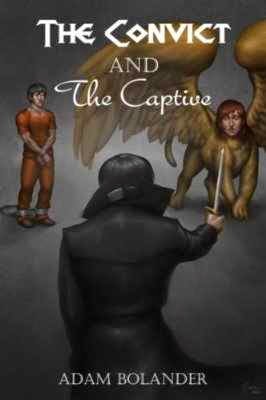 What dangers should we avoid in the Mythic Realms?
What dangers should we avoid in the Mythic Realms?The Slayers, for one. They may think they are virtuous warriors fighting the good fight and protecting the human race, but in actuality they are vicious brutes who have hunted innocent Mythics to extinction almost since the beginning of recorded time. Even other humans aren’t safe, as they will not hesitate to kill anybody they think has aided their enemies in any way.
What types of weaponry or fighting styles are common in the Mythic Realms?
Between the Slayers and the Mythics, there are very few (if any) fighting styles that are not actively used in battle. Both sides prefer to use swords and magic rather than guns, but are hardly at a disadvantage because of it. One of the more notable fighting styles used in The Slayer and the Sphinx is Dominic Vega’s, second in command in the Slayers’ ranks. He always carries around a bag full of handmade wooden javelins, which he can use for either long range or melee combat.
What types of vehicles, animals, technology, etc. are used to travel in or to the Mythic Realms?
A common way to travel in The Slayer and the Sphinx is teleportation. People and creatures with the ability to use magic can use this to transport themselves wherever they want to go. Attempting this without practice, though, can make you end up miles away from your intended destination – a lesson that Sarah learns the hard way.
What types of plants, animals, or sentient races might we encounter in the Mythic Realms that we don’t normally see on Earth?
There are far too many to name. If you’ve heard a story about a monster or mythical creature, it’s most likely true. Some of the creatures used the most in The Slayer and the Sphinx are sphinxes, elves, djinns, dwarves, gnomes, chimera, satyrs, and gryphons – amongst many, many others.
What role, if any, does magic or the supernatural play in the lives of people in the Mythic Realms? If there is magic, please give some examples of what it involves or how it’s used.
Magic can be used by anybody, if they know how. Some creatures can use magic more easily than others, which is why human magic users are so rarely seen outside of corps like the Slayers. They must always be careful, because overestimating their abilities can often prove fatal. To Mythics like sphinxes, djinns, and elves, it comes more naturally.
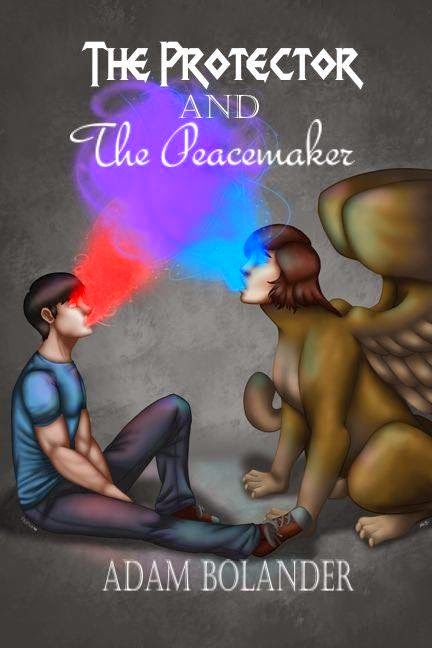 What is the political or government structure in the Mythic Realms? Who is in charge there at the moment, and what kind of leader is he/she?
What is the political or government structure in the Mythic Realms? Who is in charge there at the moment, and what kind of leader is he/she?The Mythic society is governed by someone called the Arch-Mythic. In this case, it is a gryphon named Rayalga. There is no rule as to what type of Mythic the Arch-Mythic must be, but it is usually a large, intimidating creature. This gives their underlings a sense of security, knowing they are being watched over by such a strong Mythic. The Arch-Mythic also employs Commanders to watch over the various Secret Sanctuaries in his absence.
Has anything in your actual life inspired the locations, cultures, etc. in your book?
I’ve spent the majority of my life living in a forest, so most of my stories usually take place in one. It’s always interesting to wonder what is out there, hiding in the trees, watching you even when you’re not watching them…
What, if any, “hot-button” or controversial topics do you touch on in your book?
Equality, and to cast away hate and prejudices. The Mythics want to live in peace, without the threat of being hunted down, but the Slayers will never willingly grant them that. I also try to show that there is good and bad in everyone. The Slayers may be murdering innocent creatures, but they do it because they have been taught to believe that the Mythics are mindless killing machines that would not hesitate the wipe out the human race if given the chance. Likewise, the Mythics have adopted the mindset that they are poor, innocent victims, and the Slayers are the ones to blame. None of them recall the events that, ironically, forced the humans’ hand in forming the Slayers. Nor will they acknowledge the corruption in their own hearts when they start to view the human race as a whole the same way the Slayers view them.
Author Autobiography:
I grew up struggling with several learning disabilities. All my life, I loved to read, and it had always been a dream to write my own books. It took me until my junior year of high school to overcome my disabilities and realize that dream, and now I can’t imagine ever doing anything else. I have written and published seven books so far, and one currently updating on the internet, with plenty more on the way!
Where can we purchase your book(s)?
Where can readers connect with you online?
I hope you all enjoyed the trip to the Mythic Realm. Questions about the world or the book? Ask them in the comments and the author will get back to you!
Click here to read other posts in the Realm Explorers series.
Please join us again next Monday for a trip to the fantasy world of Avalon in Realm Explorers Part XI!
Welcome to Realm Explorers! In this weekly series, we visit a variety of unique worlds created by talented science fiction and fantasy authors. Enjoy your travels! And don’t forget to read to the bottom of the post to find out more about each author and see how to purchase the featured book.
Author’s name: Cynthia P. Willow
Title of book and/or series: The Karini and Lamek Chronicles
Brief summary of the story:
The Karini and Lamek Chronicles is an endearing fairy tale of High Fantasy. Enter a world of fairies, dragons, dwarves, and elves in The Land of Serenity, a magical world where possibilities are endless and truth makes a difference.
From one reviewer: “Cynthia does an expert job of creating memorable and interesting characters who rapidly endear themselves to you with their exploits and personality traits. Her book[s] are good for young readers, with lots of action and adventure to hold their interest while also being very parent-friendly.” ~ Krystine Kercher
Brief description of the world or location you created for this story:
The Land of Serenity is a beautiful land full of lush forests, scenic mountains, and a huge castle! Fairies dance on flower petals, dwarves mine for diamonds, and then there are the dragons…. are they good or evil?
If we were to visit The Land of Serenity as tourists, what would you recommend that we see or do there?
The mushroom village where the fairies live would be a lot of fun. Just watch your step! Then we could split into groups to see which group could find the secret cave first! A visit to Mount Flog to meet the snow parrots would be interesting, but bring a snow suit! We could hop in a mine cart and visit the dwarves…diamonds anyone? If you’re not scared of getting lost in the woods, we could hike up Mount Chesney and search for Natas’ cottage. If nothing else, we’d have to take a tour of the castle.
What dangers should we avoid in The Land of Serenity?
Well, watch out for the dragons, giants, and trolls. But they’re nothing compared to Natas.
Is there a distinct or unusual type of food or meal that we might be served in The Land of Serenity?
There’s no telling what Filmer will cook, but he specializes in dumplings. The fairies would love to serve you tea and cakes though!
What types of weaponry or fighting styles are common in The Land of Serenity?
It depends on who it is, but many use wands, teleportation, and animal transformation. In other words, MAGIC!
What types of vehicles, animals, technology, etc. are used to travel in or to The Land of Serenity?
The Land of Serenity is full of mythical creatures. Just about anything you can think of is there. If you can tame a dragon, you can hitch a ride on it. Then again, it might be more fun to befriend a witch and hop on the back of her broomstick!
What role, if any, does magic or the supernatural play in the lives of people in The Land of Serenity? If there is magic, please give some examples of what it involves or how it’s used.
Magic plays a huge role in the Land of Serenity. There are good witches and wizards, and there are evil ones. We learn in book 1 a secret that has to do with magic, but I don’t want to reveal it.
Is there any advanced or unusual technology in The Land of Serenity? If you haven’t described it already, please give some examples.
Not really. For the most part, the folks in The Land of Serenity live a lot like people in medieval times did.
Are the days of the week and months of the year the same in The Land of Serenity as on earth? What holidays or special events are celebrated regularly there?
Yes. The days are the same. The only holidays that are mentioned are birthdays. Several characters celebrate their birthdays in The Land of Serenity. One particular party starts off with a bang and ends in a huge battle. Wedding celebrations are also big in The Land of Serenity.
Is there a particular religion practiced in The Land of Serenity? Please describe what it involves.
Not directly. Characters demonstrate faith in God, but I don’t go into a whole lot of detail with it. However, the good morals and lessons in the stories reflect my own Christian upbringing.
What is the political or government structure in The Land of Serenity? Who is in charge there at the moment, and what kind of leader is he/she?
The Land of Serenity is supposed to be ruled by a king, but that was before the dragons took over….
Has anything in your actual life inspired the locations, cultures, etc. in your book?
I’ve always had a love for fantasy. I passed that love onto my children, and they were the inspiration for these stories. I began writing book 1 when my son (now 17) was 8 years old, and my daughter (now 14) was 5. The villain in book 1 (Ocamar) was named by my son. Once we came up with the land and the names of a few characters, it took off! There would be no Land of Serenity without my children.
What, if any, “hot-button” or controversial topics do you touch on in your book?
Magic is controversial enough! As a writer who is also a Christian, I have had to defend this series, but most Christians are accepting of it once they realize it’s not much different than the writing of C.S. Lewis. The Bible is clear when it comes to the presence of evil, and fantasy and the use of magic is one way to demonstrate good versus evil.
Author Autobiography:
Cynthia P. Willow writes Christian fiction and fantasy for all ages. She lives in Georgia with her husband, three children, and their family pet—a Morkie named Madam Alice Bellatrix.
Where, and in what formats, can we purchase your books?
Where can readers connect with you online?
I hope you all enjoyed the trip to the Land of Serenity. Questions about the world or the book? Ask them in the comments and the author will get back to you!
Click here to read other posts in the Realm Explorers series.
Please join us again next Monday for a trip to the Mythic realms (hidden right here in our own world!) in Realm Explorers Part X!
Welcome to Realm Explorers! In this weekly series, we visit a variety of unique worlds created by talented science fiction and fantasy authors. Enjoy your travels! And don’t forget to read to the bottom of the post to find out more about each author and see how to purchase the featured book.
Author’s Name:
Peggy M. McAloon
Brief summary of the story:
Book 1 of the Elle Burton series, Elle Burton and theReflective Portals, is about a young girl who encounters winged creatures from another dimension on her tenth birthday. Her first encounter is at Wolske Bay in Menomonie, WI where she captures one of the creatures entering Earth from a reflective portal (her own reflection in the lake). She is enticed by these creatures to help them protect the children of Earth by becoming an Earth Guide.
Being a guide seems like the opportunity of a lifetime. Elle is an ordinary kid and has always loved helping others; now she’ll have magical assistance. Not everyone wants her to succeed. There are evil forces that do everything in their power to keep guides like Elle from offering support to those in need. Can Elle be brave enough to oppose them?
Brief description of the world or location you created for this story:
Fiori is unlike any place on earth. There are more flowers than you have seen in your entire life. Some are as large as a tractor tires with centers as big as a meat platter. The inhabitants of Fiori live in rustic stilt houses scattered in and among the flowers where they can gaze down at the beautiful valleys of flowers below them. There are reflecting ponds throughout the valley. Fiorins depend on them to travel between Fiori and Earth. The sky is burnished with the red, purple, and gold shades of the most spectacular sunsets imaginable. There are no clouds in the sky and the ground is covered with carpets of orange, crimson, and yellow. Azaleas, bougainvillea, ice-blue calathea, and thousands of white kukui blossoms fill the valleys.
 |
| Amadeus Fighting a Zorin |
If we were to visit Fiori as tourists, what would you recommend that we see or do there?
Definitely attend an event at Mother Blue’s Temple. The structure looks like the Doric temples in ancient Greece. Columns adorn the outer part of the colossal building, reaching up toward the crimson sky. The structure is completely covered in the softest of pearl-white flower petals. Enter through the arched entrance to enjoy one of the many banquets there. Strings of flowers cover the entrance. Brilliant metallic golds adorn the white inner walls. Golden chandeliers hang from the ceiling and art tapestries hang on the walls, depicting scenes from Fiori and from the human world. Taking a ride on the back of a turquoise Truero in a reflective pond is an absolute must! If you are extremely lucky and Mother Blue is particularly fond of you, you may be able to tour the land on the back of Pegasus.
What dangers should we avoid in Fiori?
Fiori is bordered on one side by a rugged mountain range where the Zorins live. The Zorins live in the cliff dwellings there. They resemble an alligator although they do walk upright on their hind legs towering nearly 10 feet tall. The creatures have soulless sulfur-colored eyes with bulbous eyelids. They are covered by scales (avocado and tobacco brown with globs of tarry mucus attached to them). You will immediately notice the dozens of sharp and horribly stained teeth in their huge mouths if you are unlucky enough to run into one. No one has ever returned to Fiori after a close encounter with these creatures. Zorins can take the shape of a human (both adult and infant), causing confusion for both Fiorins and earthlings. Fiorin Perimeter Control rules require that you get no closer than 150 yards to the outer perimeter of Fiori. They can use their uncanny ability to suck in huge amounts of air and draw in any Fiorins or humans unlucky enough to be near them.
Is there a distinct or unusual type of food or meal that we might be served in Fiori?
While in Fiori, anything you may need is provided. Whatever your favorite foods, they will magically appear as desired.
What types of weaponry or fighting styles are common in Fiori?
In book one, the only weapons utilized against the Zorins are wooden poles and spears. Zorins do have deadly reactions to pollen, which is one of the reasons the valleys of flowers protect the Fiorins. There are no modern weapons in Fiori.
What types of vehicles, animals, technology, etc. are used to travel in Fiori?
In Fiori the creatures that live there have wings. They need no other form of transportation. Human Guides who are visiting can travel on the backs of Pegasus and the Trueros. Otherwise, they can ride in carriages pulled by giant spiders.
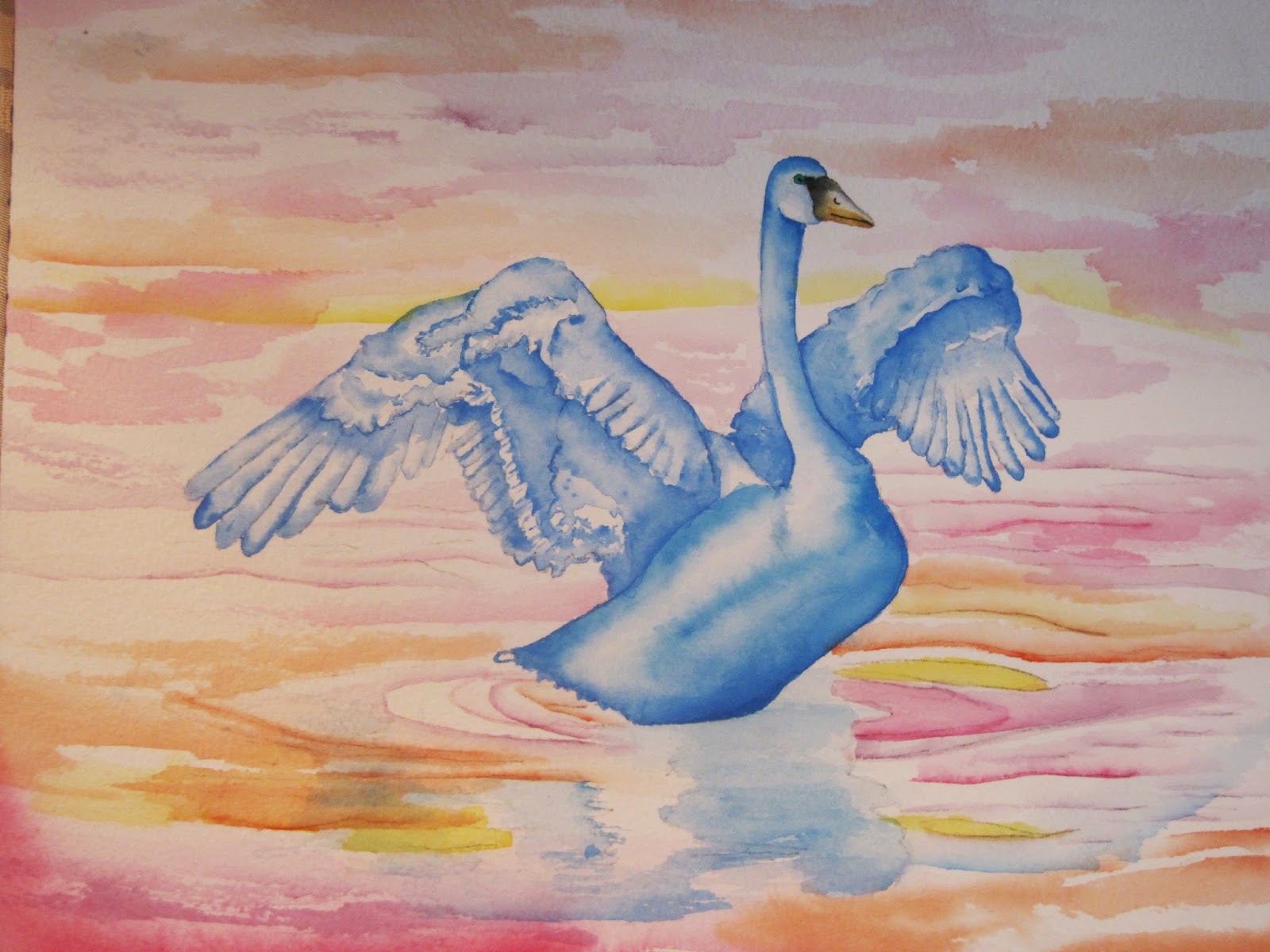 |
| a truero |
What types of plants, animals, or sentient races might we encounter in Fiori that we don’t see on earth?
Things seem a bit backwards in Fiori compared to Earth. Spiders are huge and elephants are house pets. The turquoise Trueros are very much like swans yet they are large enough to carry a human on their back. The plants and flowers are gigantic compared to their counterparts on Earth. Fiorins, when they travel through the reflective portals (through the reflections of the children of Earth), are the size of butterflies in Earth’s dimension, but they are equal in size to humans in the realm of Fiori. They look very human-like with larger eyes than humans and wings like a butterfly or fairy. The Zorins have already been described. They look rather like an alligator but walk on their two hind legs in an upright manner.
What role, if any, does magic or the supernatural play in the lives of people in Fiori? If there is magic, please give some examples of what it involves or how it’s used.
All Fiorins have the ability to sing a “Siren Song” that can drive a human insane. They use this to protect children if they have enough time. They are not allowed to physically harm any human but can inflict temporary pain to prevent harm to a child under the age of 8. Fiorins are assigned to every new-born baby on Earth. They breathe the first breath of life into the child so they will have a kind heart. Some do not make it to the child before birth because of trickery initiated by the Zorins.
Each Fiorin then has one special power. Amadeus, the warrior, has the ability to summon huge storms with wind and lightning. Milo is capable of blowing himself up into a giant sponge to protect children who may fall or be injured in a car accident.
 |
Medallion on Mother Blue’s Necklace
(back) |
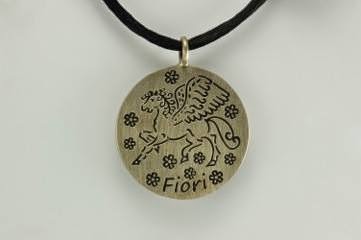 |
Medallion on Mother Blue’s Necklace
(front) |
Mother Blue, the Empress of the Fiorin colony in Book 1, has multiple powers and a bronze necklace that holds the secret to her powers. The necklace can only be activated by the human guide who has been predicted to come to Fiori during their 11th year in the Sacred Scrolls of Destiny. It has been given to numerous guides in the past, but no one has had the ability to unleash the magic. No one knows yet the extent of the magic that the necklace holds. The necklace had magical powers only for Mother Blue and the “chosen one” as predicted in the Sacred Scrolls. The chosen would accomplish 3 major challenges during his/her 11th year. Mother Blue had loaned the bronze pendant to other guides, but no one had yet been able to unleash the magic. Now it’s Elle’s turn to try.
There is a magic fountain in Mother Blue’s Temple. She is able to look into it on the day a child reaches the age of 8 to determine what the future holds for them on Earth.
Is there any advanced or unusual technology in Fiori? If you haven’t described it already, please give some examples.
When you think of Fiori, think of the Garden of Eden. Magic exists, but there is no modern technology.
Tell us about any sports, games, or activities that are available for entertainment in Fiori.
Fiorins are a very simplistic race. They turn huge flowers into May poles and swings with the assistance of spider webs. They also fashion elevators utilizing spider webs. They live in the natural surroundings and revel in food, dance, and song.
Are the days of the week and months of the year the same in Fiori as on Earth? What holidays or special events are celebrated regularly there?
A brief second on Earth is the equivalent of hours and hours in Fiori. Most Fiorins are thousands of years old in Earth time. They do not marry as do the people of Earth. They consider themselves to be part of one huge family. The days are continuous. Night never falls. The sky is filled with the colors of the most vibrant sunset you have ever seen. Fiorins acknowledge holidays celebrated in all countries on Earth but they do not celebrate any specific Fiorin holidays. Celebrations are spontaneous when an Earth Guide has a major victory against evil.
What is an Earth Guide?
Earth Guides are chosen by Mother Blue through her knowledge gained through the magic fountain. They are humans who are able to move throughout Earth through a wish. Fiorins can only travel on a wish with an Earth Guide. The Human Guides are the only ones (other than some children under the age of 8) who can see the Fiorins on Earth. It is their responsibility to offer whatever assistance the Fiorins may require to protect the children of Earth. Guides are life-long assistants but they do have free-will and can decide to quit if they so desire. All memories of Fiori and the winged creatures will then disappear from their memory.
Are there any other creatures that assist the Fiorins?
Fiorins have the ability to communicate with all animals on Earth. They also employ messengers to carry messages between Fiorins and Earth Guides. (We know these messengers as carrier pigeons, although other birds can carry messages in times of great need)
Is there a particular religion practiced in Fiori?
We are not aware of any particular religion in Book 1 of the series other than a tremendous respect for the environment.
What is the political or government structure in Fiori? Who is in charge there at the moment and what kind of leader is she?
All Fiorins are equal. The leader is Mother Blue. She has the undying love and support of all her subjects. She leads with compassion and love for all Fiorins and the people of Earth. This is how it has been for centuries and no one questions her authority or knowledge. She acts more as a mother figure than an absolute ruler. Free-will is encouraged.
 |
|
Bellengrath Gardens, AL: Similar to the Land of Fiori
|
Has anything in your actual life inspired the locations, cultures, etc. in your book?
I would have to say that everything in my life has inspired the realm of Fiori. I was raised in a very religious home. Most of our activities outside of school were centered in the church. I loved the stained glass windows; most especially the one that had a beautiful angel. The Fiorins are based on my childhood vision of what my guardian angel might look like. Fiori is a combination of my vision of what I believe heaven might be like and a section of walkway in Bellengrath Gardens in Mobile, AL that are alive with azaleas in the spring of the year. Flowers of every description adorn the property and it is as close to what I would hope heaven would look like as anything I have ever seen next to the tulip fields in the Netherlands.
What, if any, “hot-button” or controversial topics do you touch on in your book?
Elle Burton and the Reflective Portals is about a young girl who has been chosen as a Guide at a very young age. She faces the challenges of bullying and parental abuse in this first book. As a victim of child abuse I understand how terrifying the threats are that a child is subjected to. It is my hope that we can inspire children through storytelling to trust enough to find an adult who can help them as Olivia did when she finally admitted to Elle why she was hiding in the bathroom at school. This is a different approach to the problems of bullying and abuse. Children are more aware of these issues than we give them credit for. The protagonist, Elle Burton is a normal young girl who can inspire kids to stand up to bullying and abuse and become more empowered than they have ever been before through a delightful and believable fantasy.
 |
| Peggy McAloon |
Author Autobiography:
Author Peggy McAloon retired from the field of commercial credit, is the author of The Art of Business Credit Investigation, and is a recognized trainer and speaker. She enjoys watercolor art and has received national awards for her efforts in the conservation of water resources. Her own journey through child abuse, depression, and a debilitating car accident elevated her desire to help children cope with their challenges in such a way that they are inspired and empowered.
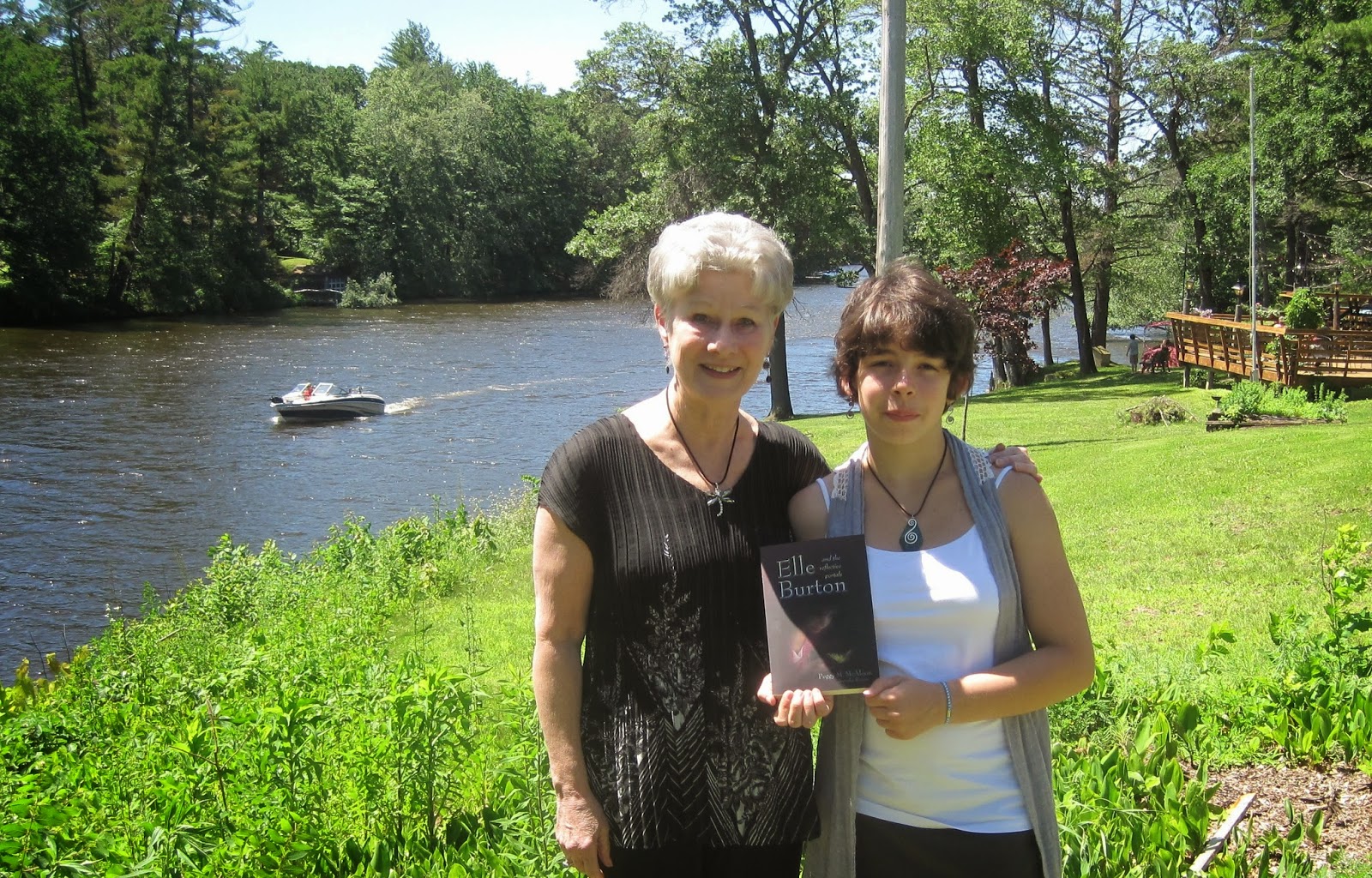 |
| Peggy McAloon with Anneka Rogers |
Eleven year-old Anneka Rogers acted as a consultant on the book. Her insistence that the class bully be “saved” provides the framework for one of the most exciting chapters in the book. Anneka is eleven years old and has participated in Tour Cross Country Team, CORE Values Program, Battle of the Books, 4-H, and Running Club.
Where, and in what formats, can we purchase your book?
“Elle Burton and the Reflective Portals” is available in both e-book ($2.99) and soft-cover ($13.95)
Where can readers connect with you online?
Welcome to Realm Explorers! In this weekly series, we visit a variety of unique worlds created by talented science fiction and fantasy authors. Enjoy your travels! And don’t forget to read to the bottom of the post to find out more about each author and see how to purchase the featured book.
Author’s name: Tony Breeden
Title of book and/or series:
The series is called Otherworld. Luckbane was published in 2013. The forthcoming sequel is called Soulbright.
Brief summary of the story:
In a dystopian future, online gaming is the ultimate escape, until one corporation offers players a chance to play their favorite sword, steam and sorcery game live and in-person on a terraformed alien world. A ragtag group of Champions has been assembled to stop the dread Firelord, last of the Dark Lords, from obtaining Godspell, an artifact so powerful that it can alter reality itself. Along the way, the players face dragons, steampunk robots, hackers, aliens and whatever perils the Gamelords think will improve their ratings, because Otherworld isn’t just a game; it’s reality TV.
Brief description of the world or location you created for this story:
There are actually three worlds I had to create for the Otherworld series. There’s the dark, dystopian future reality (which I unofficially think of as Realworld) controlled by the Megacorporations, where players immerse themselves in virtual reality games, like Impworld. There’s Impworld, the universe’s most popular sword, steam and sorcery game. And then there’s Otherworld, which is essentially Impworld 2.0 on a terraformed alien world. While I had to create entire histories, creatures and cultures for all three worlds, the majority of the story takes place on Otherworld [aka the continent of Wanjur on planet Tarak].
If we were to visit Otherworld as tourists, what would you recommend that we see or do there?
If you don’t do anything else, I recommend that you visit Cabon Gabrielle, City of Shields. Cabon Gabrielle itself offers a wide variety of tourist attractions. Thanks to its Sky Docks and dragonrail system, the Pearl of Olden is only a few days journey from wherever you happen to be. You can visit the Ogreball Stadium, peruse the magical artifacts in Arcanum Alley [if you can find it!], feast with the dwarves in the Mountain Hall tavern, dance with werewolves and vampyres at Club Blood, visit the griffon riders at the Royal Aerie, or take in a dragon’s-eye view of the city and its several story tall flying Shields from the top of Seneschal Tower. And don’t forget to visit the Lonely Ogre Inn while you’re there! More adventures have begun, passed through and ended at the Ogre than any other destination on the planet.
What dangers should we avoid in Otherworld?
What would be the fun in that?
In all seriousness, most of the indigenous life should be avoided at all costs. Fliers are harmless, but there’s no such things as a safe wog. Named after the late Dr. Henry Woggenstein, wogs are largely unclassifiable bug-reptiles [a tentative taxon at best] with too many teeth, eyes, tentacles, claws, pincers, etc. They’re basically everything we feared aliens would be.
One should also avoid Mot Hadrall, period. Only serious gamers brave it. It is not a place for tourists. They don’t call it the Accursed City for nothing; it boasts an 85% kill rate. Most players never even make it to the castle!
It goes without saying that venturing into a Dark Lord’s castle, a dragon’s lair or an orc village will not end well. And don’t antagonize the imps!
Is there a distinct or unusual type of food or meal that we might be served in Otherworld?
Earth foods grow to fairy tale proportions in the miraculous soil of Tarak. In fact, all “normal”-sized trees on the terraformed continent of Wanjur are actually pygmy varieties of Earth plants. You can also expect to eat rabdil [elephantine rabbit/armadillo crossbreeds] meat, a standard throughout the universe ever since the gentle giants were created through genetic manipulation. Of course, Otherworld offers a wide variety of foods that are culturally specific to elves, humans, dwarves, et cetera. Just be aware of dishes which may fight back!
What types of weaponry or fighting styles are common in Otherworld?
Otherworld is a sword and sorcery environment with steampunk elements. Weaponry ranges from standard swords, axes, halberds, crossbows and siege engines to pistols, alchemical phials, dragonbreath cannon, walking battle platforms, and more exotic magical weapons, like gauntlets of ogrish strength, firebows and Godspell, a weapon that can alter reality itself.
What types of vehicles, animals, technology, etc. are used to travel in or to Otherworld?
To reach Otherworld, one has to board a heilo platform and travel to a distant star system. Don’t worry; you’ll be in cryosleep during the journey and it only takes a month or so. From the Tarak system’s heilo platform, your stasis pod will be transported by solar sailor to Lunabase, orbiting the gameworld planet. Once you awaken and get over your bout of stasis sickness (sorry, it affects all living things), you can shuttle down to the Shakar Landing Field and book passage to the continent of Wanjur, but don’t forget to check out the Otherworld Zoo before you leave! There are a wide variety of ways to travel. Steampunk machines, ships that sail the skies and seas, zeppelins, dragonrails, terrestrial steeds (horses, dragonish warstriders, etc). One can also travel by magical bubble, carpet and dragonfly copter.
What types of plants, animals, or sentient races might we encounter in Otherworld that we don’t see on Earth?

Otherworld is filled with all manner of creatures you won’t see anywhere else outside of a movie or virtual video game. Dragons, goblyns, bugbears, minotaurs, elves, dwarves, vampyres, ophidians… the list of fantasy creatures and races goes on and on.
One of the character races unique to the Impworld/Otherworld environs are borogs. In game lore, borogs crash landed on Obsidius [the Impworld planet] during the latter part of the Third Age. Borogs are heavyworlders; being from a planet with greater gravity than the one they’ve crashed upon, they are much stronger and agile than many other races. They are divided into three people groups: Reigans rule by psionic superiority; horned Volktans are the warrior class; and Tagnars make up the slave working class. Some of the Tagnars have rebelled against their masters and found refuge amongst the Free Peoples of Obsidius.
On a similar theme, Realworld Earth has also seen the creation and rebellion of Homo adaptis, or mutants. Pantropic mutants come in several forms, depending upon where they were meant to serve. Fur-covered mutants work in arctic regions, gilled mutants farm the oceans, etc. They were created to mine near-airless Martian mines, fight our wars and basically do anything else Homo sapiens considered too low or dangerous. The War of Martian Independence and the subsequent Mutant Wars have allowed mutants to gain recognition of their basic human rights, but racial tensions are still high.
On realworld Tarak, one might encounter a strange, towering plant called the drubulb. Drubulbs are the home of the enigmatic dru, an insectoid hive that may or may not be sapient. When the continent of Wanjur was terraformed for gameplay, not even pocket nukes could remove the dru or their drubulbs, so the Gamelords have simply posted warning signs around them.
What role, if any, does magic or the supernatural play in the lives of people in Otherworld? If there is magic, please give some examples of what it involves or how it’s used
The gameworld is filled with supernatural creatures, such as ghosts, wraiths, vampyres and werewolves. Some creatures are inherently magical; for example, dark-skinned, golden-eyed shadus elves can blend into shadows, glow in the dark and walk on any surface [even upside-down] at a thought. Some imps are nearly magic incarnate.
By the rules of the game, the phases of the two moons determine the level of power a spellcaster has at his disposal. Thrice annually, both Sylvanus and Ikon the Magebane wax full and a magic-user’s potential is at its peak. Unfortunately, their power drops to its lowest ebb roughly two weeks prior and following this “doubling,” making them vulnerable during this time. Spellcasters keep track of their power levels via a magical tattoo on their forearm. The sigil resembles a stylized hourglass, where the current stage of each moon was represented in its own hemisphere. In order to gain this tattoo, one takes the quidnunc, a gauntlet of challenges administered by representatives of the Magus Council to determine the spellcasters worthiness for the art. The Magus Council has governed the lawful use of magic ever since its formation during the Second Age. Those who pass are legally sanctioned to learn and practice magic. Those who fail are denied all but the meanest of spells on pain of death.
To refuse the quidnunc is to place a deathmark on one’s own head. The Magus Council keeps careful track those with budding magical abilities and sends its dread Inquisitors to hunt down renegades who chose to practice magic unmarked. Once cornered, they are given the choice to submit to the quidnunc or be executed. Inquisitors also bring magus to justice for crimes involving magic (which sometimes brings them into jurisdictional conflicts with local authorities, especially those who do not recognize the Magus Council’s authority) and those practicing the Forbidden Arts. Inquisitors are especially zealous these days, ever since a small army of largely unmarked wizards and witches had experimented with powerful, but unpredictable wyld magicks, resulting in the cataclysmic Magewar.
Non-magus can use magical artifacts. In general, all you have to do is figure out how to turn them on and then point them in the right direction.
Is there any advanced or unusual technology in Otherworld? If you haven’t described it already, please give some examples.
The magic of Otherworld is made possible by nanites, while its creatures are largely made possible by biological robots called simulacrums, or sims. Some players opt not to play live, instead piloting avatars [basically remote-controlled sims] via nodal implants from Lunabase. The game also features a variety of steampunk technology, fueled by either soulstones, technofairies, or plain old-fashioned lowtech. To give an example, when visiting the City of Shields, one can see giant walking battlestations called Sentinels patrolling its walls, zeppelins harbored in its Sky Docks and dwarven gyrocopters buzzing through its skies.
Tell us about any sports, games, or activities that are available for entertainment in Otherworld.
The most popular games within the most popular game in the universe are gladiator-type games and ogreball.
Ogreball was invented by ogres trying to train their cubs in the art of semi-organized team combat. The original version involved real weapons and a casualty rate. Several types of balls are used. Metal studded, leather clad balls are primarily used for making points. There are also a few metal or stone balls of larger size, used mostly as wicked, bone-breaking dodgeballs. Lastly, there is a large, ogre-sized wicker ball, inside of which is placed an unlucky prisoner (human, goblin, pig, etc.). Ogres were also known to use bombs and severed heads in gameplay. The rules of the ogrish game are uncertain. There are no goal posts; however, there is a large earthwork in the center. The floor of the playing pit is graded away from the earthworks, so that the balls will roll into ditches at either end of the pit. There, other ogre players collect the balls and launch them from oversized slingshots or, in the case of the wicker cage, a catapult. The object of the ogrish version is two-fold: beat the other team senseless until only your team is alive and/or conscious and beat the snot out of the wicker ball. It is pretty much a huge, rule-less battle with players using clubs to bash the balls at each other or to simply bash each other senseless, while mega-slingshot operators pummel everyone indiscriminately.
The civilized game utilizes an official court of play. The stadium is set up to resemble an ogreball pit with seats lining the tops of the perimeter of a rectangular field. Goal nets are placed at two opposite corners. A low net similar to a tennis court net halves the field, emulating the ogrish earthwork barrier. A pass exists on either side of the net. A semi-circle is marked off around the net in which only the goalie can occupy. He cannot leave this area. All players are protected with leather armor. The goalie bears a shield and his choice of either an ogreball club or racket. The guard players stay on their side of the net and are armed with ogreball clubs. Skirmishers can go anywhere on the field, except the goal zone. Skirmishers are armed with rackets. Unlike the ogrish version, players are not permitted to bludgeon each other. There are only two types of ball in play: medium sized leather-bound rubber balls and large leather-bound rubber balls. The field includes anywhere from 20 to 30 of the smaller balls, divided evenly along the sides of the net at the start of play and 2 to 4 of the larger balls, placed in the passes in even numbers. Smaller balls are worth 2 points apiece per goal. Large balls are worth five points. Play continues until the last ball has been caught in the nets, thus ending a set. A game consists of 1 to 4 sets, agreed upon beforehand. Balls which overshoot the net are tossed back into play. A standard game includes twenty 2-point balls and two 5-point balls at the start of a set. A championship game consists of thirty smaller balls and four larger balls and a large wicker cage ball [unoccupied] worth 20 points. No bombs or severed heads are utilized in the civilized version.
Are the days of the week and months of the year the same in Otherworld as on earth? What holidays or special events are celebrated regularly there?
The days of the week are the same as they are on Earth. Tarak has two moons. The aptly-named Feast of Two Moons occurs when both moons are full, every 4 months.
Is there a particular religion practiced in Otherworld? Please describe what it involves.
Realworld religions find their place in the game alongside fantasy dragon cults and such. Islam, Chrisianity, Judaism and Buddhism are still very much alive. Protestants and Catholics have, for the most part, unified. The Church utilizes shepherds, bishops and paladins. The Church is headed by a ruling Council.
One particular cult of note in Otherworld is Corpus Dracon, which loosely translates as the Boy of the Dragon. Each cell is led by a Locutor Draconis, or Dragon-speaker, who tells his followers the will of the coming Dragon Kings. Corpus Dracon has no tome; its ultimate authority lies with the Locutor’s word [locally] and the Grey Prophet [ultimately]. Their aim is to usher in the Age of Dragons, ruled by the Dragon Kings. It matters not one whit to these cultists that dragons are savage destructive creatures who haven’t the slightest bit of interest in governance. The Grey Prophet is a magus who conjures illusions to back up his various prophecies; his true identity is unknown.
What is the political or government structure in Otherworld? Who is in charge there at the moment, and what kind of leader is he/she?
The realworld is controlled by the Megacorporations. Only Israel and Switzerland have retained their national identities. AmeriCo controls Earth’s Western hemisphere, and thus is generally referred to as the West. EuroCorp controls Europe and northern Asia. The Islamic Confederacy ruled Afrika, the Middle East, and India. Imperial AsiaCorp, termed the East by most, owned Australia and the remainder of Asia. Each controls various interests in Antarctica and on the lunar colonies, both points of constant friction. Each blames the other for the fact that the Mars Colonies have successfully declared their independence. Everyone works for the Megacorporations or one of their various sub-companies. GameComm is a company of AmeriCo. It uses the West’s heilo wave technology to make travel to and from Tarak a possibility. The West benefits by mining Tarak’s levitanium [the element that makes hovertech possible, once only found on Mars or random asteroids] and by receiving a share of Tarak’s supercrops. GameComm uses indentured Colonists to harvest its crops and work its mines. There is growing concern that GameComm will request recognition of its separate Megacorporational status due to its Tarak holdings and due to the fact that GameComm also owns Earth Robitics Limited, the largest producer of robots in the universe. The current Vice President of Tarak Operations, and the face of GameComm for all intents and purposes, is Kenneth Gabriel. He is pompous, self-assured and ruthless in his pursuit of ratings. He lords over Tarak from his hoverthrone in Lunabase’s Command Center.
Are there any other unique cultural practices that we should be aware of if we visit Otherworld?
Cultural practices vary according to the character races and kingdoms of the game. You’re going to need a handbook or a guide if you don’t want to end up tossed into a dungeon somewhere. Good luck.
Has anything in your actual life inspired the locations, cultures, etc. in your book?
In general, history inspires and informs my locations, cultures, etc. Some of the battle scenes, creatures and artifacts were inspired by watching my own kids play. For example, when I attacked my youngest son with a plush spiked club [you have got to get one of these if you have boys!], he defended himself with a plush alligator. Thus Grundy the Ogre’s live alligator “club” was born. ;]
What, if any, “hot-button” or controversial topics do you touch on in your book?
Luckbane doesn’t really touch on any hot-button issues, though it mentions a few I’ll likely explore later, like what it means to be human and how genetic manipulation, robot sapience, etc., might affect our views of human rights, how we practice religion, etc.
 |
| Author Tony Breeden Under Attack |
Author Autobiography:
I’m from West Virginia, home of the Mothman, the Flatwoods Monster and Gray Barker, who likely invented the Men in Black. I’ve been an avid sci-fi/fantasy/steampunk/monster/comic book fan all my life and I have a wonderful wife and four adventurous boys who share my geek fandom. I credit my late aunt Sharon for giving me the writing bug; she helped me make my very first book about dinosaurs, loving illustrated in crayon. I basically write the movies in my head.
Where, and in what formats, can we purchase your book(s)?
You can purchase Luckbaneand all of my other books in both paperback and Kindle formats at
Where can readers connect with you online?
I hope you all enjoyed the trip to Otherworld. Questions about the world or the book? Ask them in the comments and the author will get back to you!
Click here to read other posts in the Realm Explorers series.
Please join us again next Monday for a trip to the fantasy world of Fiori in Realm Explorers Part VIII!
Welcome to Realm Explorers! In this weekly series, we visit a variety of unique worlds created by talented science fiction and fantasy authors. Enjoy your travels! And don’t forget to read to the bottom of the post to find out more about each author and see how to purchase the featured book.
Author’s name: Krystine Kercher
Title of book and/or series:
The series is Legends of Astarkand; the books are A Shadow On The Land (#1); King’s Ride (#2); and Eiathan’s Heir (#3). I plan to add another couple of books before the series is wrapped up.
Brief summary of the story:
Wary of the mysterious tenders of lake and stream, terrified of the immortal prince Vodan’s plagues and storms, and alienated from the Dreamsender by their efforts to appease Vodan, Kandians seek a deliverer. A five-hundred-year-old prophecy brought Bjorn Horsa north over steep mountain passes to confront Vodan. Before he can be anyone’s deliverer, he must first take up the mantle of Eiathan’s Heir and ascend the throne of Astarkand.
Brief description of the world or location you created for this story:
Isolated by high mountains to the south and west, and the ocean to the east, the kingdom of Astarkand is located in a northern temperate zone with long, heavy winters and cooler summers. While vast tracts of forest still cover less accessible parts of kingdom, Astarkand is known more for its rich, rolling hills of farmland and several volcanos.
If we were to visit Astarkand as tourists, what would you recommend that we see or do there?
There is a lot to do in Astarkand! You can visit Lake Bleuet and sing with the mermaids, or camp in the giant’s ruins near Braskfut to view the firebirds as they perform their nightly dance. Climbing Mt. Brask is a suitably hazardous adventure to excite any adventurer! No one living now in Astarkand has ever seen the top because it’s covered year-round in clouds.
Be sure to pay your respects to the king at Hearthing Castle. If you’re very fortunate, he might even invite you to go boar hunting with him in the forests between Hearthing and Hardeburg.
 |
| Map of Astarkand |
What dangers should we avoid in Astarkand?
Don’t go swimming in Lake Bleuet or the Limbler River! The water is extremely cold, and you can die from hypothermia, even in high summer.
Mermaids are always on the lookout for likely husbands. If you have a mishap at sea and a mermaid rescues you, men, be prepared to never see dry land again! Women, you’re on your own…
Is there a distinct or unusual type of food or meal that we might be served in Astarkand?
The head baker at Hearthing Castle makes an excellent pigeon pie, but you’ll have to ask him to remove the feet before he puts the pigeons in.
If you prefer haggis and mead instead, pay a visit to Earl Moggan! He’ll fix you up.
What types of weaponry or fighting styles are common in Astarkand?
Knights in Astarkand wear a combination of steel plate armor and chain mail, and prefer long, one-handed swords that they can swing while holding a shield. They also armor their horses.
Downsmen like Ernie Hay O’Dell rarely go toe-to-toe with an enemy, preferring to strike from ambush. They excel in martial arts, dueling, and archery, and wear only boiled leather as protection.
What types of vehicles, animals, technology, etc. are used to travel in or to Astarkand?
Kandians use horses, boats, and their own feet to get around. While they also use wagons for transporting goods, even the high roads maintained by the king are quite bumpy. Many bridges in Astarkand wash out every spring. Kandians have adapted by using ferries at major crossings.
Mermaids use selkies in their cities the way Kandians use horses. They also catch rides with dolphins and larger fish and water mammals when necessary.
The Perfect rarely use any conveyance other than their feet or their portals.
What types of plants, animals, or sentient races might we encounter in Astarkand that we don’t see on Earth?
 |
| a mermaid in Astarkand |
Other sentient races you might encounter in Astarkand are: the Perfect (Kandians call them elves, but they aren’t); mermaids, possibly even giants.
White firebirdshave become very rare and found now only on Brask Mountain. Firebird feathers fluoresce when they’re exposed to fast-moving air, as when the firebirds chase moths at night. The resulting light can be painfully bright.
Fleuders are everywhere, and multiply like vermin. Fleuders look like very hairy, brownish-gold cacti on six stubby legs, and make a grinding sound when agitated. Their mouths are located on their underside between their legs. They also tend to shed, and some people are allergic to fleuder hair.
Fleuders eat decaying vegetation and prefer to live under or near the northern cabbage palm; a large clump-forming wild plant with cabbage-shaped tops with large leaves that shade from white through pink to purple as they age. In winter, the top of a cabbage palm sheds its loose outer leaves, leaving behind a tightly furled tulip-shaped center. Gardeners cultivate the cabbage palm for its beauty, but farmers try to keep it out of their fields.
While not living in Astarkand itself, but confined in a narrow mountain valley to the south, there is also a large, fire-breathing dragon.
Other creatures sometimes found in or near Astarkand: black squirrels, wolverines, dire wolves, and gar cats.
What role, if any, does magic or the supernatural play in the lives of people in Astarkand? If there is magic, please give some examples of what it involves or how it’s used:
Most Kandians believe that magic is an elf-gift and cursed, but Woden’s priests do small magics such as summoning or contacting their master. They call their master Woden, but his real name is Vodan.
The Immortal Vodan can control the weather. He’s especially talented with ice and storms, but he can also create plagues. His lady-wife, Ashielle, is the ultimate green thumb. If it is possible, she can make a plant do it! Vodan and Ashielle’s daughter Gunhild is a sorceress who shapeshifts. She is also adept at using and curing poisons, and crafts new creatures out of human and animal flesh.
Mermaids are believed to have magical powers, but they instead rely on the Dreamsender for provision and protection from Vodan’s terrible schemes. Their ability to be half fish in the water, and their uncanny voices and wild beauty are due to Gunhild’s unethical tinkering with their genes.
Gunhild is also to blame for the race of giants and for the creation of fleuders.
Is there any advanced or unusual technology in Astarkand? If you haven’t described it already, please give some examples.
Vodan’s scrying bowl, which he uses to spy on Kandians, and the portals the Perfect use to transport themselves across long distances. Humans have difficulty seeing the permanent portals, although they can sometimes fall into them and be swept away. Most of the portals used in these stories are temporary.
Tell us about any sports, games, or activities that are available for entertainment in Astarkand.
Kandian men like to test each other’s mettle at tourneys with sword duels, wrestling, racing, and jousts, but they also enjoy dancing with the ladies, hunting with hawks or dogs, and most other medieval forms of entertainment. Everyone in Astarkand is fond of music! Troubadours and bards are welcomed into every tavern and house, from the humblest hovel to the king’s castle.
Are the days of the week and months of the year the same in Astarkand as on Earth? What holidays or special events are celebrated regularly there?
Astarkand’s calendar year is pretty close to our own, however they measure time differently, in New Kandian Reckoning (NKR) years instead of so many years A.D.
Kandians celebrate the turning of the seasons: the first blade of spring, the summer flowering, harvest, Yuletide, and the new year. They also throw parties when electing their mayors and city council, at weekly markets, and summer fairs. Depending on the social importance of the people involved, birthdays, weddings, and funerals can also be a cause for celebration.
Is there a particular religion practiced in Astarkand? Please describe what it involves.
Bjorn Horsa and his men celebrate the religious holidays on the church calendar, but they weren’t raised in Kandia, where believers have been persecuted for five hundred years.
The average Kandian was raised sacrificing to Vodan on Woden’s Day; to Ashielle when they plant and harvest their fields, and when they sit down to eat; and to Gunhild when an unexplained death occurs. Everyone in Astarkand fears Woden’s priests, who demand harsh sacrifices, even human lives.
What is the political or government structure in Astarkand? Who is in charge there at the moment, and what kind of leader is he/she?
Astarkand has been ruled since its founding by a succession of kings. The country began as a constitutional monarchy but has devolved to become feudal in structure.
Are there any other unique cultural practices that we should be aware of if we visit Astarkand?
It is okay to wipe your mouth on the tablecloth and to eat your ‘trencher’ if you’re a commoner (trenchers are made out of flatbread). Be sure to bring your own cutlery with you whatever your rank, because no one will lend you their personal set, and you might wind up eating with your fingers.
Has anything in your actual life inspired the locations, cultures, etc. in your book?
The rolling hills of Astarkand’s central provinces remind me of places I knew in my childhood; and the tangled scrub forest along the Joompsbette River reminds me of the peaty swamps and bottomland along streams in South Carolina.
Eating with your fingers is an acceptable practice in parts of Asia, just as it is sometimes in Astarkand.
What, if any, “hot-button” or controversial topics do you touch on in your book?
The ecological cost of deforestation, and the grim realities and abuses inherent in a feudal society where those at the top hold all the power and those at the bottom are powerless and at their mercy.
Krystine Kercher is a former MK (missionary kid) from West Papua, Indonesia, where she grew up having lots of adventures with her friends in the expat and local communities. Now she writes fantasy and science fiction from a Christian perspective while sharing her love of adventure with her readers!
Krystine is also a mother to two children who like to read her books. She loves her tuxedo cat, Shelah, who is by turns naughty and affectionate. She also loves gardening, sewing, and creating artwork using a variety of media.
Where, and in what formats, can we purchase your book(s)?
Where can readers connect with you online?
I hope you all enjoyed the trip to Astarkand. Questions about the world or the book? Ask them in the comments and the author will get back to you!
Click here to read other posts in the Realm Explorers series.
Please join us again next Monday for a trip to the fantasy land of Otherworld, in Realm Explorers Part VII!
Welcome to Realm Explorers! In this weekly series, we visit a variety of unique worlds created by talented science fiction and fantasy authors. Enjoy your travels! And don’t forget to read to the bottom of the post to find out more about each author and see how to purchase the featured book.
Author’s name: Laura VanArendonk Baugh
Title of book and/or series:
The Kitsune Talesseries includes so far Kitsune-Tsuki, Kitsune-Mochi, and “The Lonely Frost” (appearing in Specter Spectacular and Weird and Wondrous Work later in 2014). Another novel is quite likely!
Brief summary of the story:
In Kitsune-Tsuki, we meet Tsurugu, an onmyouji who has been hired by the warlord to protect his new bride from a kitsune, or shape-shifting fox spirit, which is rumored to be near. The question is, how does one find a shape-shifter who may not even exist?
Kitsune-Mochifollows Tsurugu-sama and many of the characters into a new threat, as supernatural forces threaten Kaede-dono’s life with the warlord in a wholly new and very real way.
Brief description of the world or location you created for this story:
This is Not-Japan of the Heian-Kamakura transition, roughly AD 1200. I have winked and called it “Not-Japan” because I took a few liberties to make some aspects more accessible for readers or to fudge a couple of historical facets closer together, but it’s fairly close to the historical culture.
Naka no Yoritomo is a daimyou, or warlord, subject to the shogun and fighting quiet battles of influence with other daimyou. Tsurugu Kiyomori is a talented onmyouji, which was actually a court position in the Heian era, a mystic practitioner responsible not only for supernatural protection but divination and calendar-keeping. All the supernatural elements in the story – the shape-shifting kitsune, music-loving tanuki, strong water-dwelling kappa, and more – are authentic Japanese folkloric elements popular for centuries of storytelling.
If we were to visit Naka-dono’s home as tourists, what would you recommend that we see or do there?
First of all, be very polite. Manners and accomplishment are everything in this society, and a beautiful girl’s marriage chances or a man’s political career can be spoiled by sloppy handwriting. Poetry is exchanged to settle everything from courtship to politics, and the quality of a poem can make or break one’s career. Speak carefully and with great consideration.
That said, this era produced poetry which has been honored for centuries, so take the time to read some of what’s passed to you. And then go outside to marvel at the military prowess which is being developed at the head of Japan’s shogunate.
What dangers should we avoid?
Well, offending the wrong person might result in such social dishonor or death, and that would certainly be inconvenient during your visit. There’s also the concern of Naka-dono’s shadows, stealthy spies and assassins to take care of that business which shouldn’t be discussed too openly. In future centuries, their descendants will be known as shinobi or ninja, but this is their misty past.
And of course there are thousands of varieties of youkai, or supernatural creatures. Many are harmless, some are friendly and benevolent, many are indifferent, some are mischievous but mostly harmless, and some like the water-dwelling kappa prefer to prey on human flesh. Don’t worry, we’ll help you to avoid the most dangerous!
Is there a distinct or unusual type of food or meal that we might be served?
Well, sushi and the hibachi haven’t been invented yet! But you’ll be served a lot of rice and vegetables, as Buddhism is making great inroads and has reduced the amount of meat consumed. What meat is eaten may be consumed raw, which will startle your tourist palette, or you may eat cooked fish. All the seaweed you eat will help to grow your hair – ladies of quality in this era had hair which reached to the floor or even trailed several feet behind!
What types of weaponry or fighting styles are common?
Tsurugu works mostly in onmyoudou, a way of reading and influencing the contrasting forces of nature, male and female, and the five elements of wood, fire, earth, air, and water. (You may have heard of something like onmyoudou; its counterpart in old China eventually developed into Feng Shui.) You will frequently see him using circles and shikigami, spirit-infused paper servants, or reading a chokubanfor celestial alignments.
The shadows, however, train in taijutsu, the use of the body as a weapon. They are more than competent with other weapons as well, knife and staff, but they know how to use their own weight and strength to advantage when they have nothing else.
What types of vehicles, animals, technology, etc. are used to travel?
Ox-cart is one of the primary methods of travel, for those who can afford it, though foot and palanquin are also seen. Horses, too, are ridden by those worthy and wealthy.
Technology is typically medieval, all muscle and levers, even though Tsurugu’s grasp of astronomy and natural science is daunting.
What types of plants, animals, or sentient races might we encounter that we don’t see today?
Your biggest surprise will be the youkai. This word is frequently translated to English as “demon,” but that’s a pretty poor translation; it means only something that is not human. A better translation for Westerners would be something like “elves,” which also are distinctly not-human and yet are seen in many varieties: Santa’s elves, Tolkien’s elves, elves which abduct children, elves which help shoemakers.
Youkai may be tiny creatures the size of a hummingbird or nightingale, or they may be enormous beings larger than Naka-dono’s spacious house. They may be as friendly as the polite beto-beto-san, who walks invisibly behind you until you gesture him ahead, or as dangerous as the fearsome oni which devours men. In general, it’s best to be cautious and polite.
The kitsune is a fox which can take the shape of a human, possibly even mimicking the appearance of someone you know. A kitsune has between one and nine tails, depending upon age and power, and it may be benevolent or malicious. They are clever and they are known to move among humans, but there are a few clues which might reveal one in disguise.
Sadly, the friendly kawausocannot be seen at all in modern Japan, as this shape-shifting river otter has been driven to extinction in its otter form.
What role, if any, does magic or the supernatural play in the lives of people?
Onmyoudou informed the lives of everyone in this era – it was magic and astronomy and meteorology and the calendar, all in one. An onmyoujiwas responsible for divining an auspicious day for beginning a new project and for deflecting negative energies. The emperor’s court kept official onmyouji, regarded just as any other government official might be.
Tell us about any sports, games, or activities that are available for entertainment.
We’ve mentioned the poetry, which was everywhere as the accepted form of communication. Men and women exchanged poetry in courtship before they met. Social status depended upon one’s graceful handwriting and turn of phrase. A moon-gazing party, in which the participants drank sake, wrote poetry, and read it aloud for prizes, might be a typical overnight indulgence among the elite.
If that seems like a ridiculous pastime, consider the sport of golf today, which is simultaneously a hobby and yet a negotiation field for many businessmen.
Is there a particular religion practiced in this era?
The native religion is Shinto, but Buddhism has been widely adopted and in some cases blended.
What is the political or government structure? Who is in charge there at the moment, and what kind of leader is he/she?
Naka no Yoritomo is a daimyousworn to serve the shogun, but his word is law in his own land (and many other places). He’s aware of his power and tries to use it fairly, though he is also aware of the great potential for betrayal and treachery in this shifting political climate.
What, if any, “hot-button” or controversial topics do you touch on in your book?
Classism and sexism are inherent and powerful in this society. The elite view the lowest classes as animals, and women are greatly restricted in education, autonomy, and voice. Kaede, Naka-dono’s wife, and Murame, a farmer’s daughter, are two very different examples of how women find power and agency in this world.
Author Autobiography:
Laura was born at a very early age and never looked back. She overcame childhood deficiencies of having been born without teeth or developed motor skills, and by the time she matured into a recognizable adult she had become a behavior analyst, an internationally-recognized and award-winning animal trainer, a popular costumer/cosplayer, a chocolate addict, and of course a writer. She speaks at conventions on Japanese Folklore & Mythology and writes books about murder and magic and mystery and hope. Find her at www.LauraVanArendonkBaugh.com.

Where, and in what formats, can we purchase your book(s)? Other titles and upcoming appearances can be found at
Amazonor my
website.
Where can readers connect with you online?
My website and blog is
www.LauraVanArendonkBaugh.com, and I always welcome comments! In addition I love to chat with readers on
Facebook and via Twitter
(@Laura_VAB). And please do say hello if we happen to be at the same writers’ or geek convention!
I hope you all enjoyed the trip to “Old Japan”. Questions about the world or the book? Ask them in the comments and the author will get back to you!
Click here to read other posts in the Realm Explorers series.
Please join us again next Monday for a trip to the fantasy world of Astarkand in Realm Explorers Part VI!
 Brief description of the world or location you created for this story:
Brief description of the world or location you created for this story:  What is the political or government structure in the Mythic Realms? Who is in charge there at the moment, and what kind of leader is he/she?
What is the political or government structure in the Mythic Realms? Who is in charge there at the moment, and what kind of leader is he/she?






 Otherworld is filled with all manner of creatures you won’t see anywhere else outside of a movie or virtual video game. Dragons, goblyns, bugbears, minotaurs, elves, dwarves, vampyres, ophidians… the list of fantasy creatures and races goes on and on.
Otherworld is filled with all manner of creatures you won’t see anywhere else outside of a movie or virtual video game. Dragons, goblyns, bugbears, minotaurs, elves, dwarves, vampyres, ophidians… the list of fantasy creatures and races goes on and on. 

